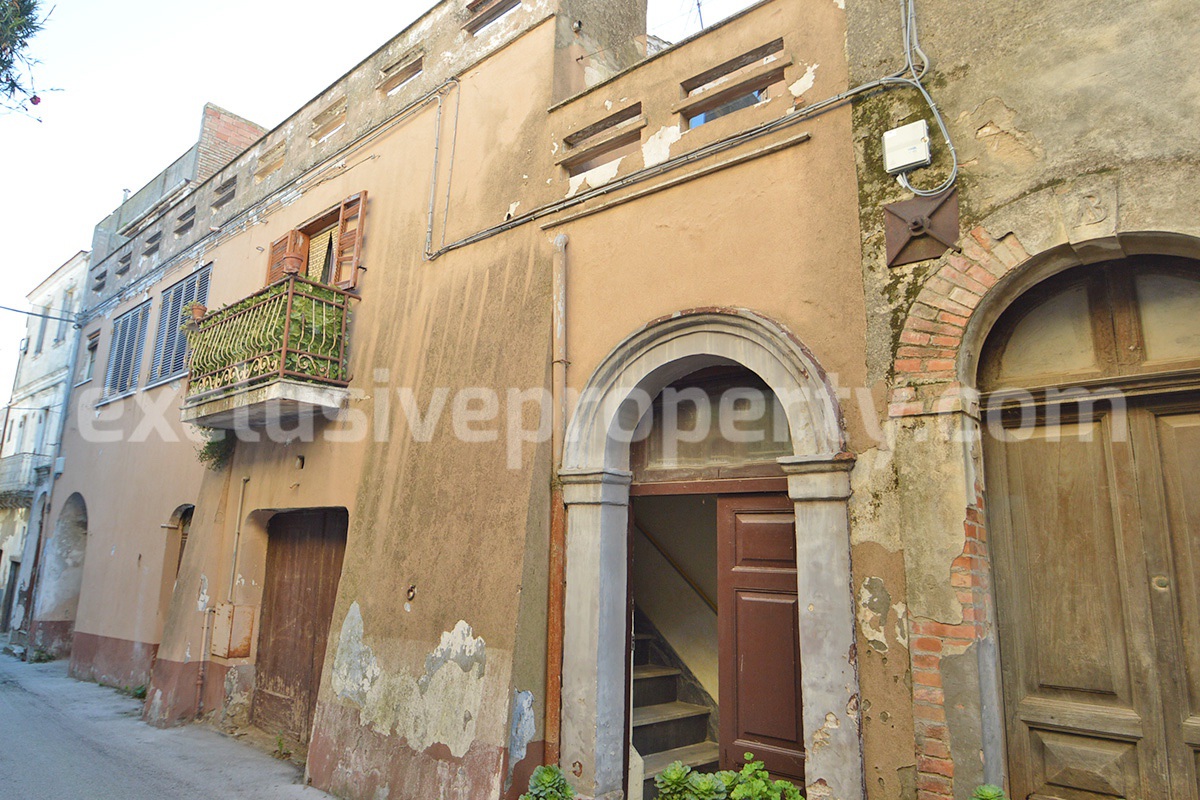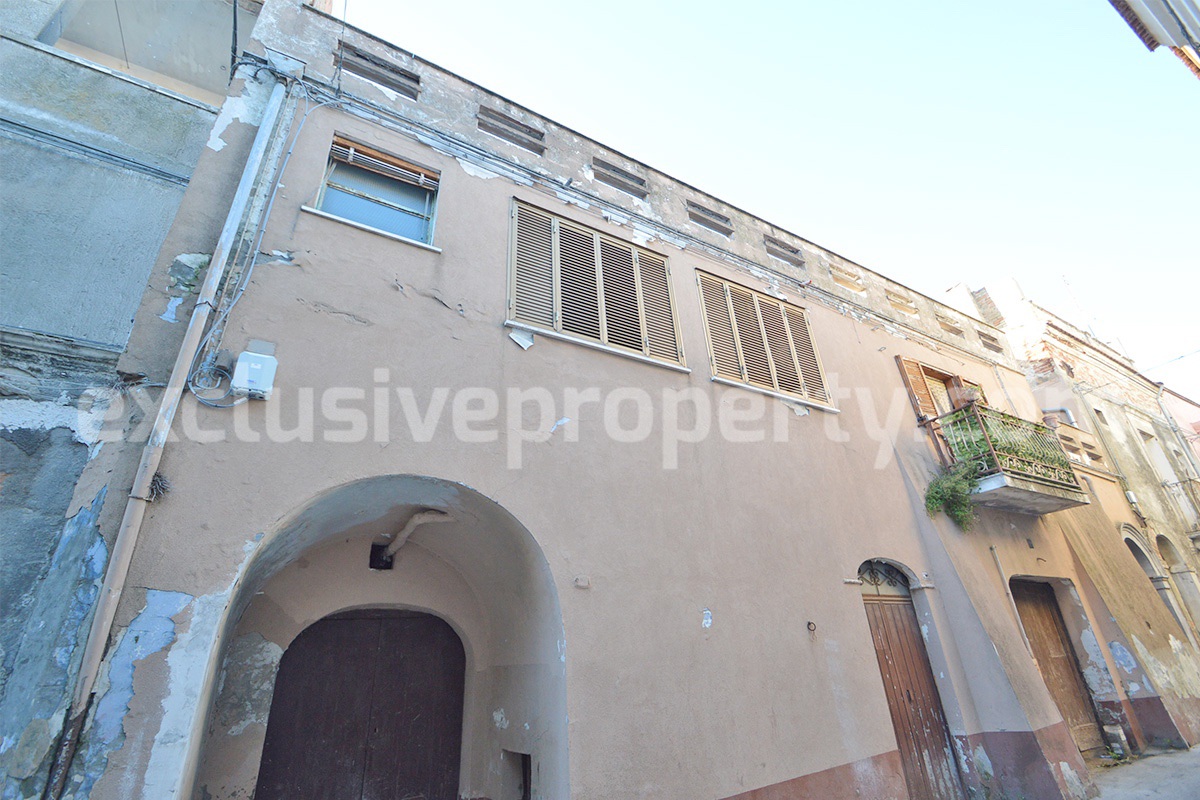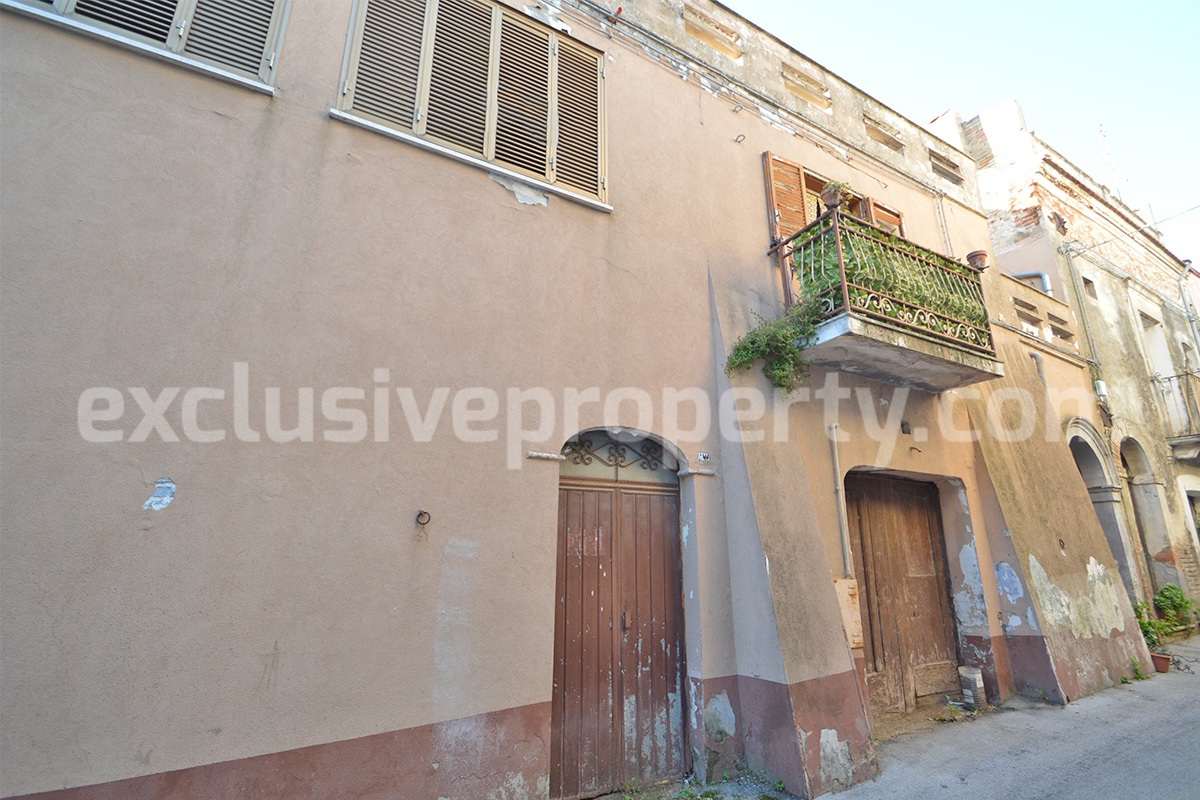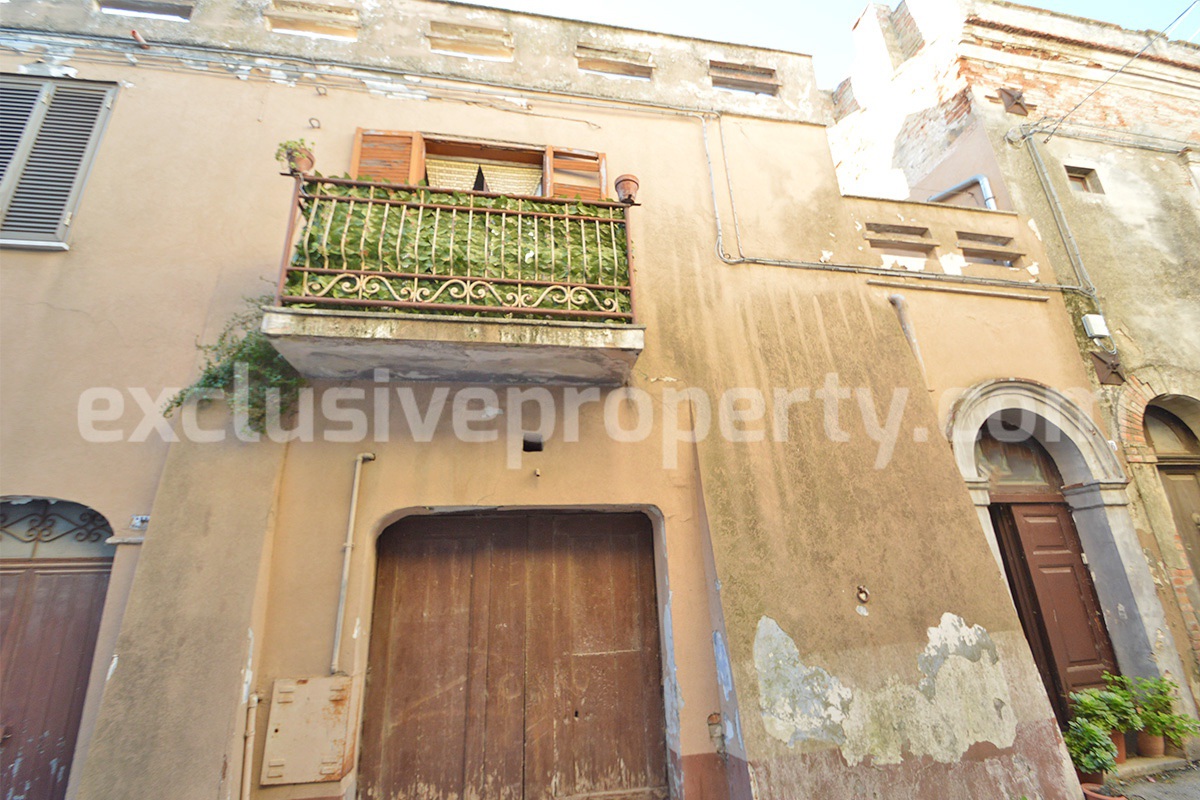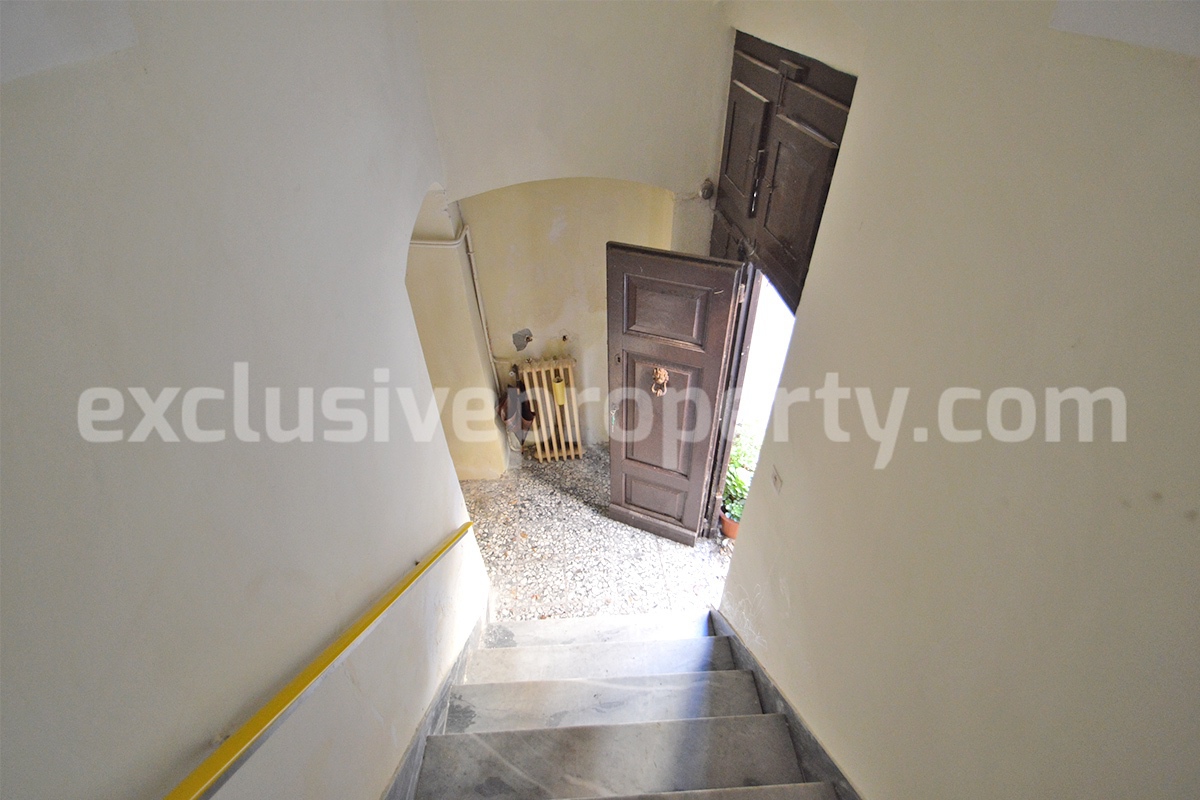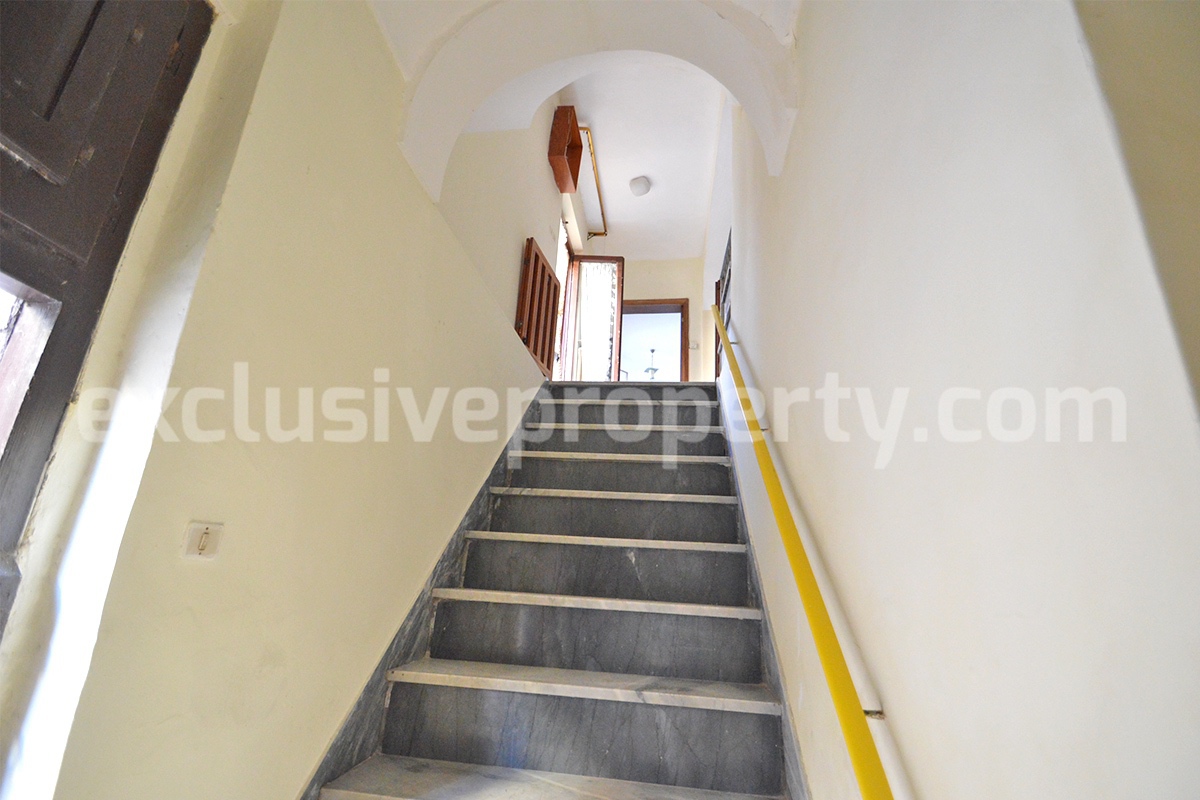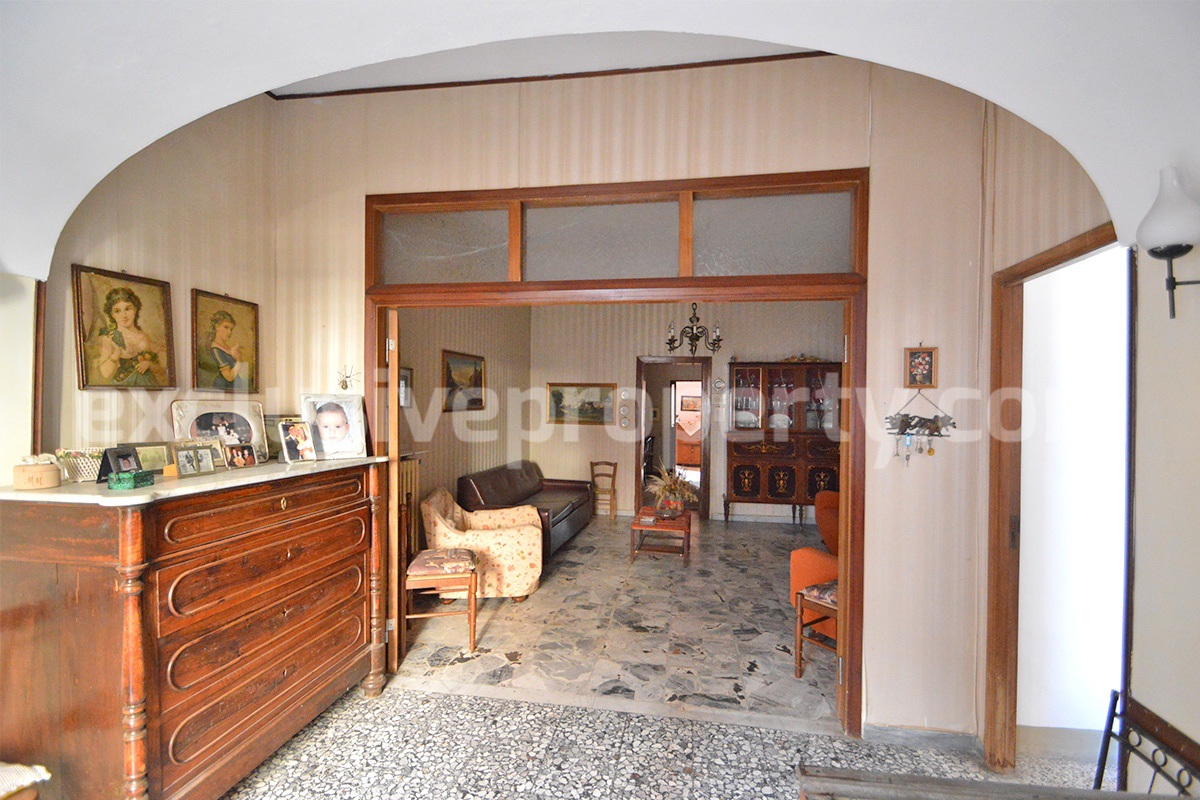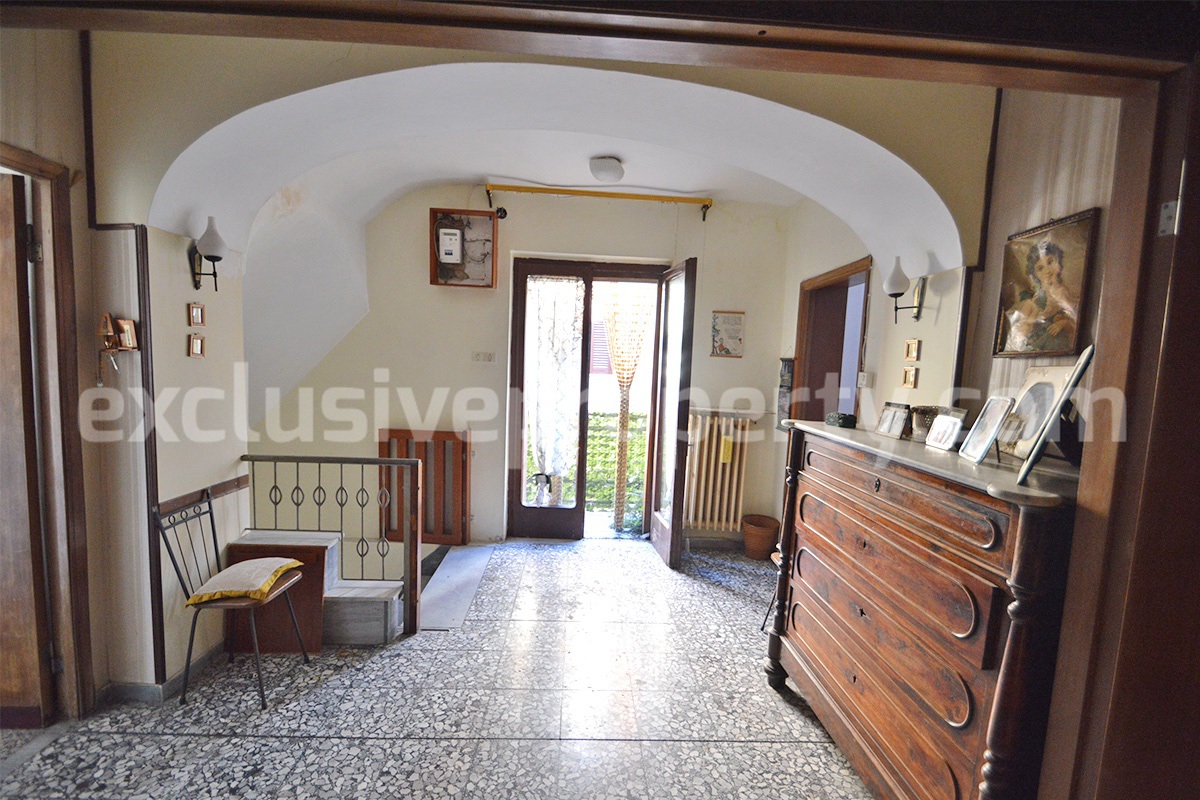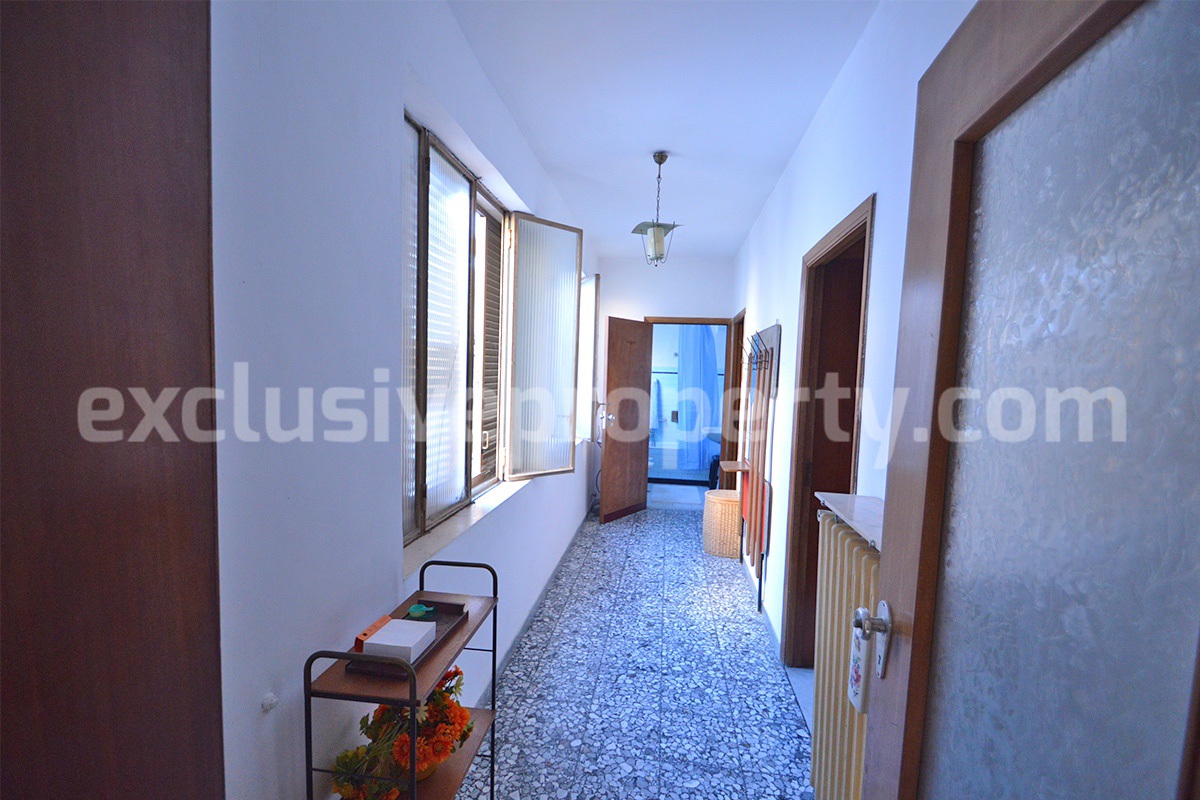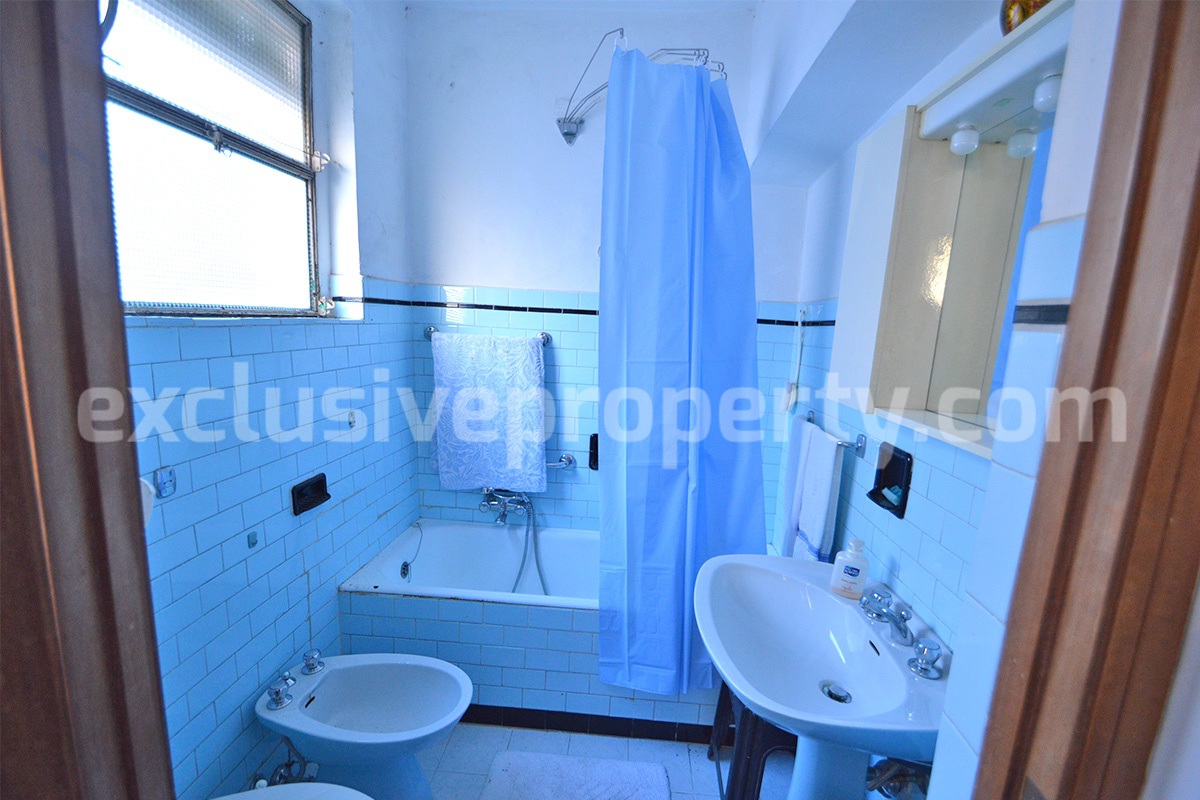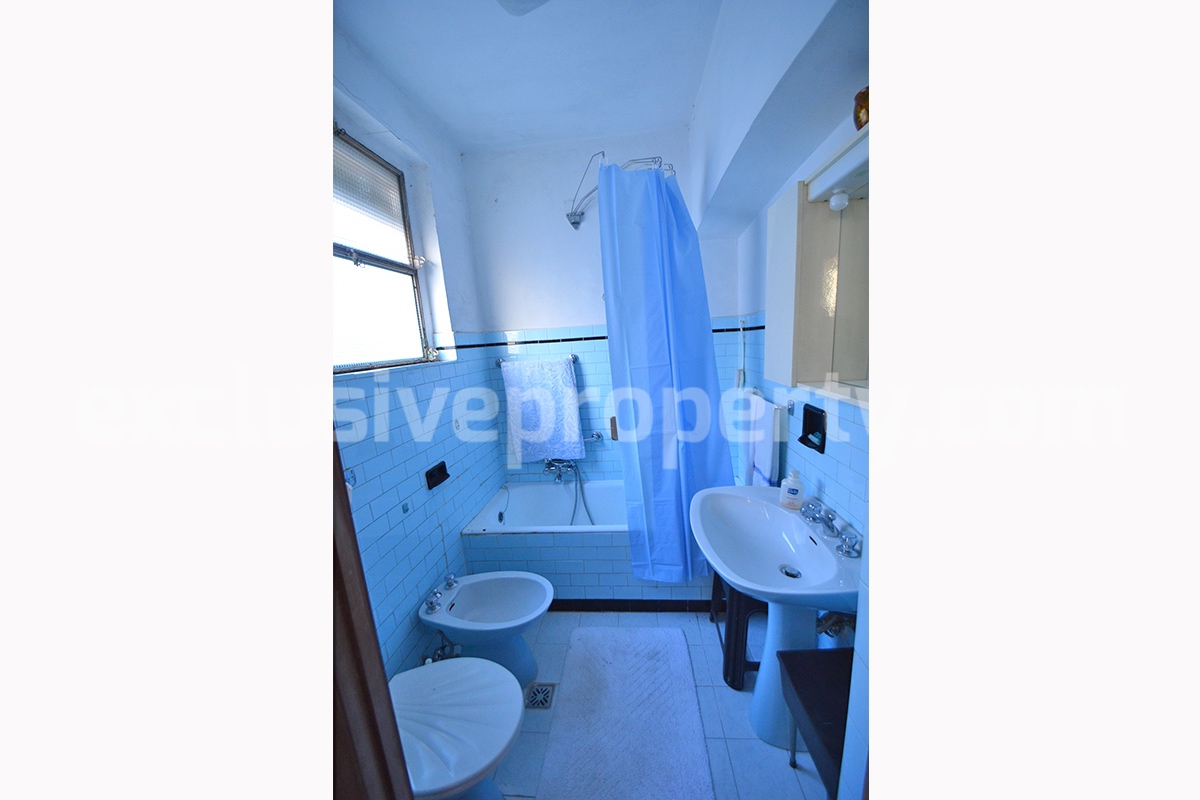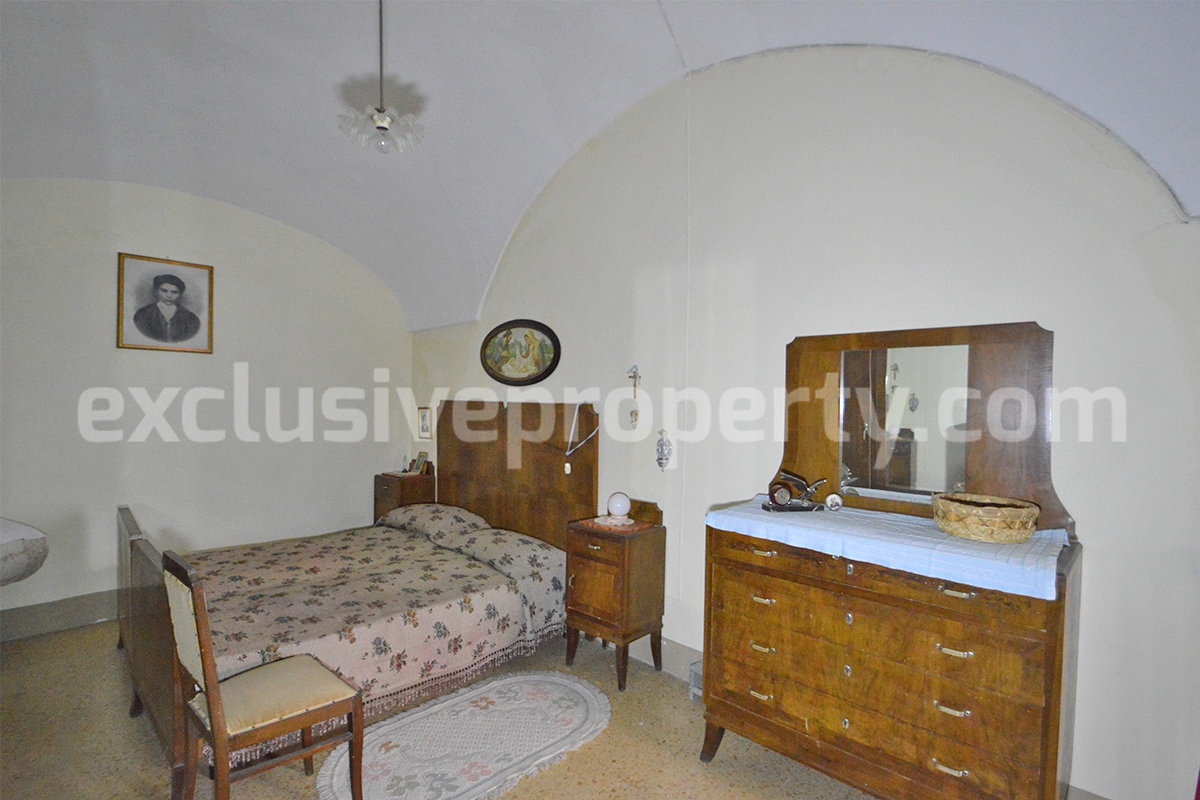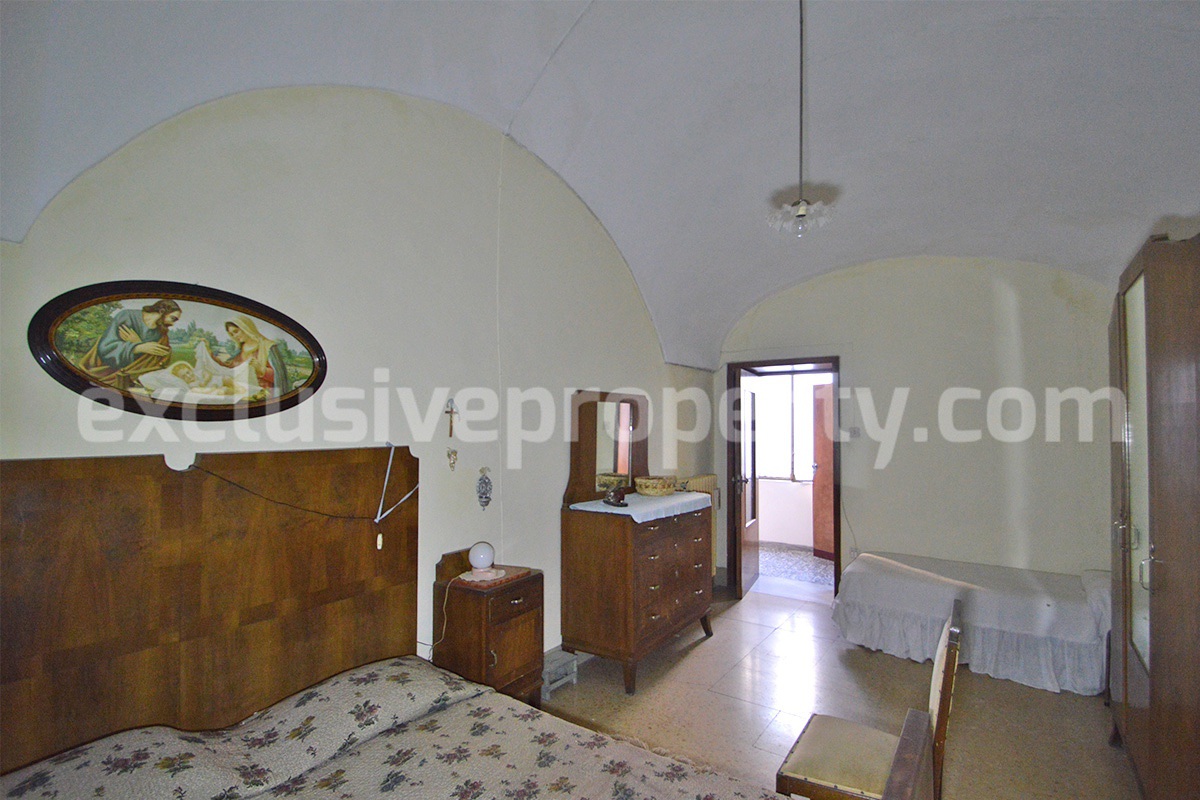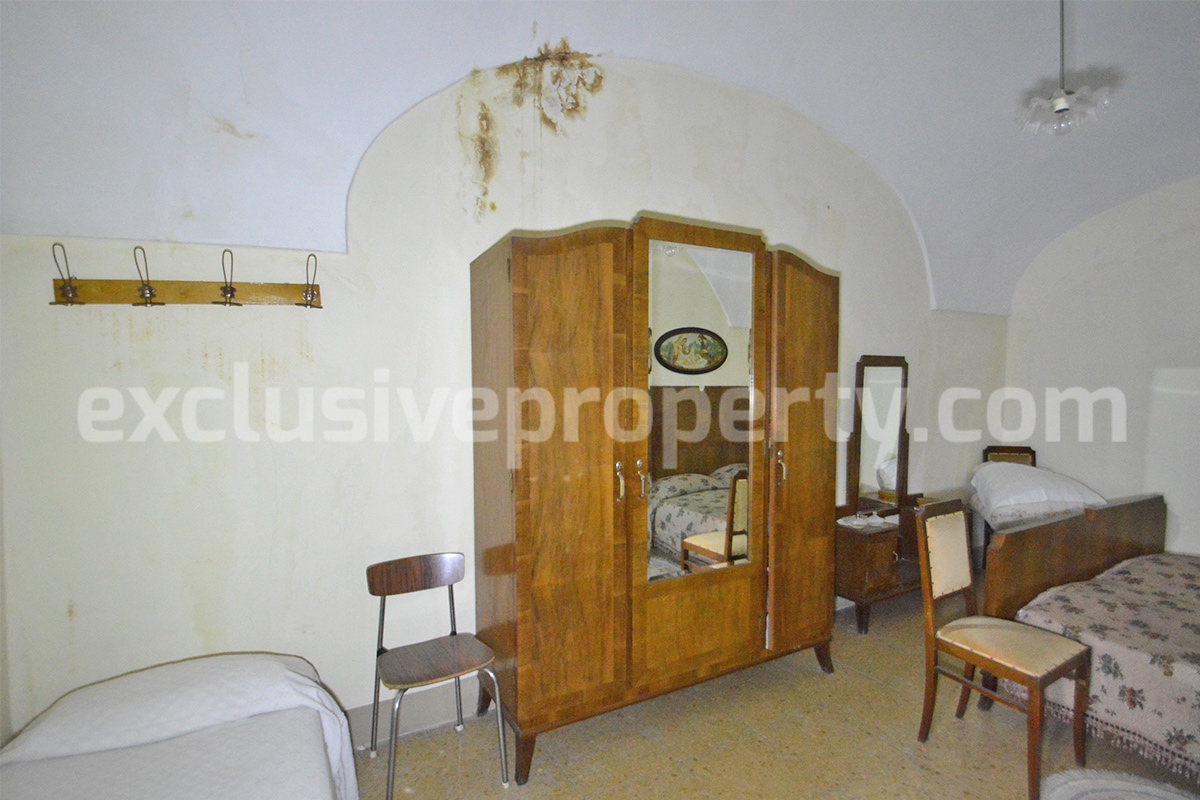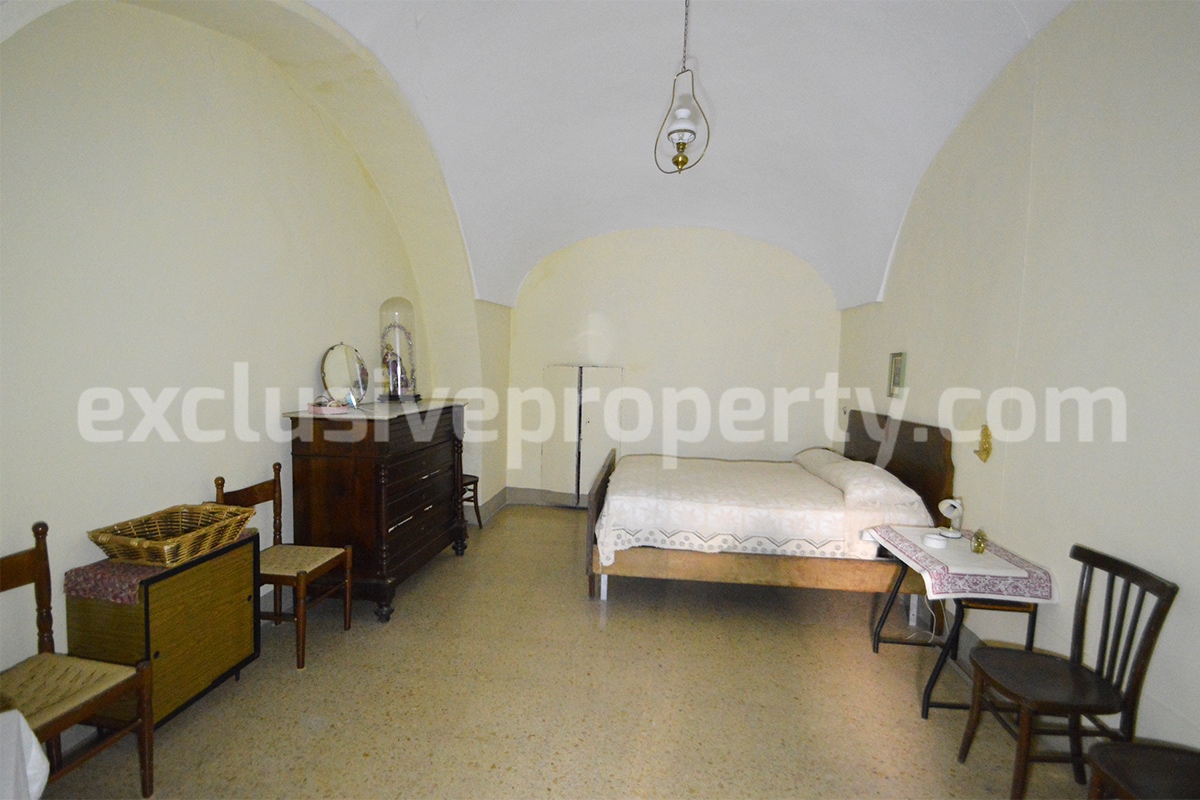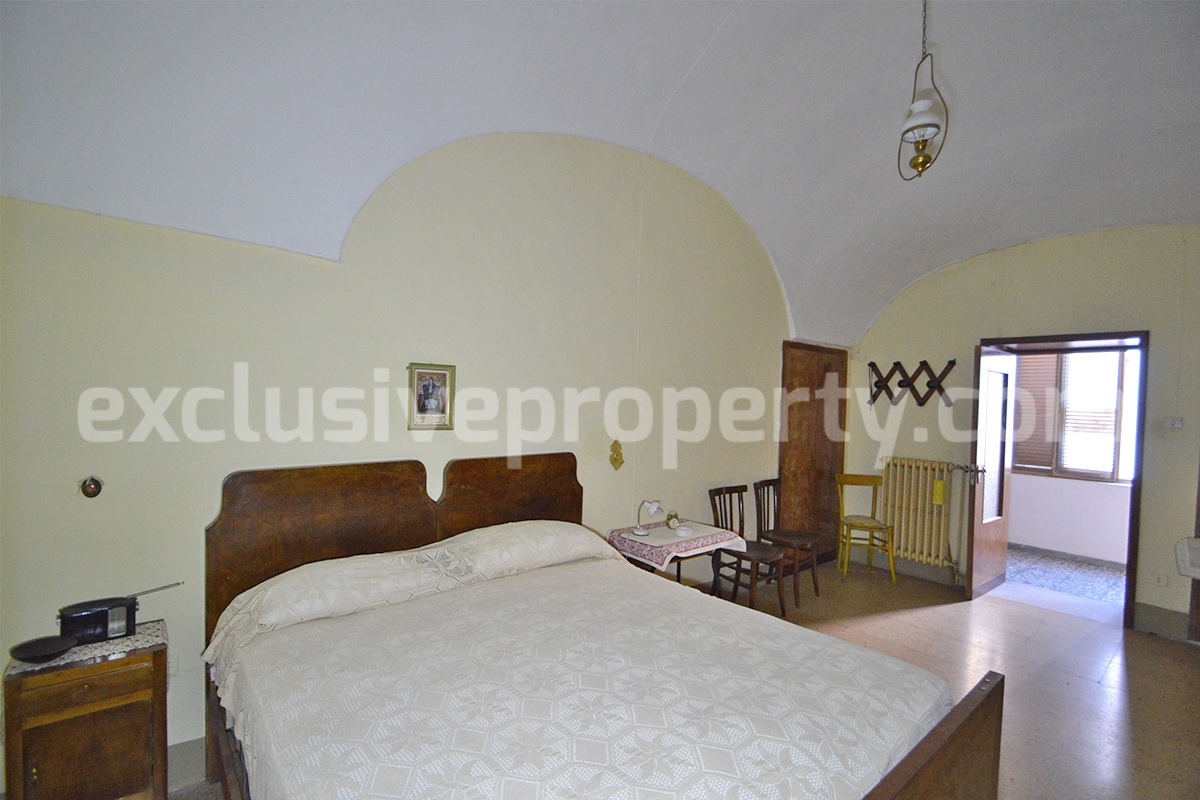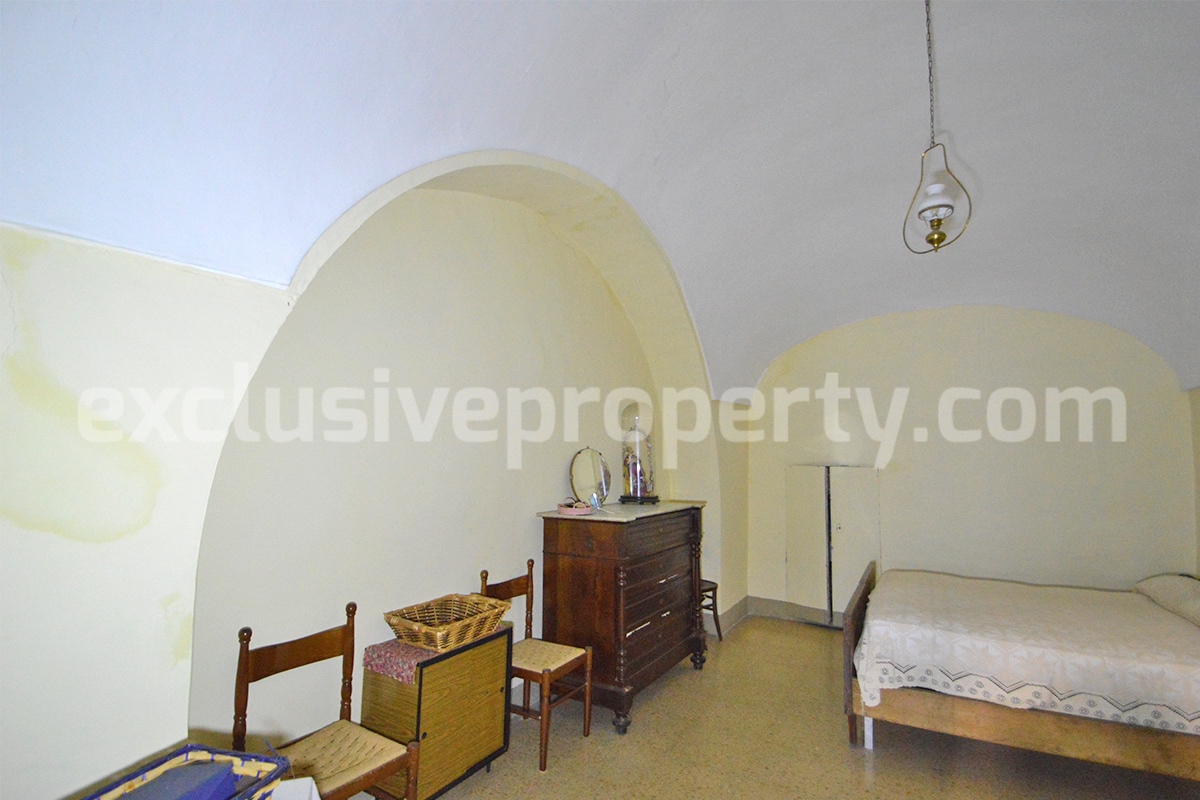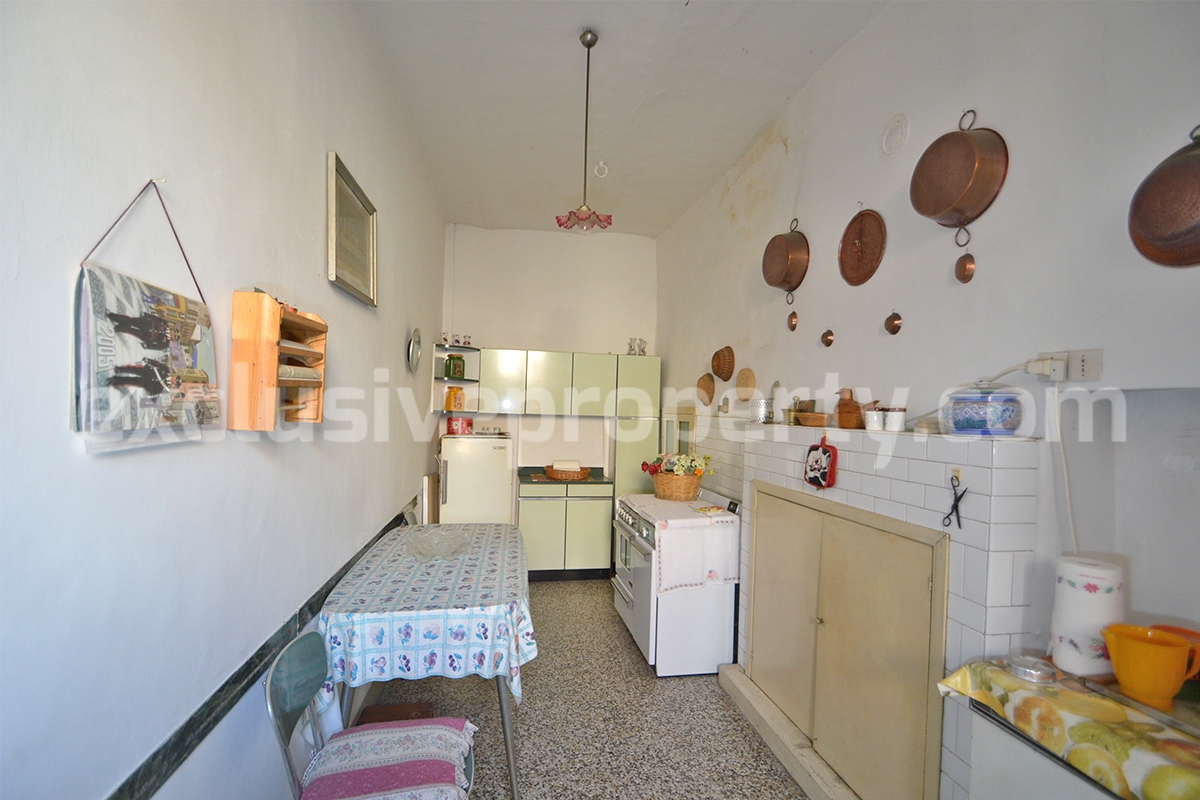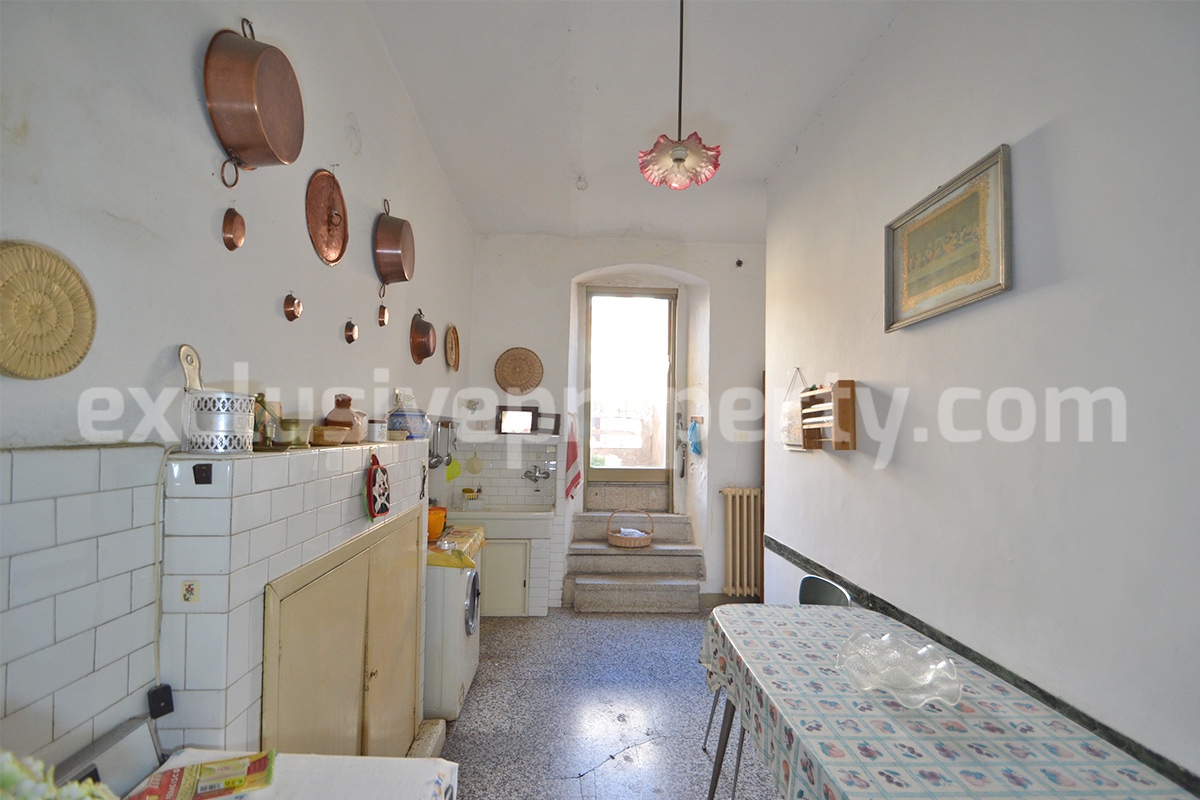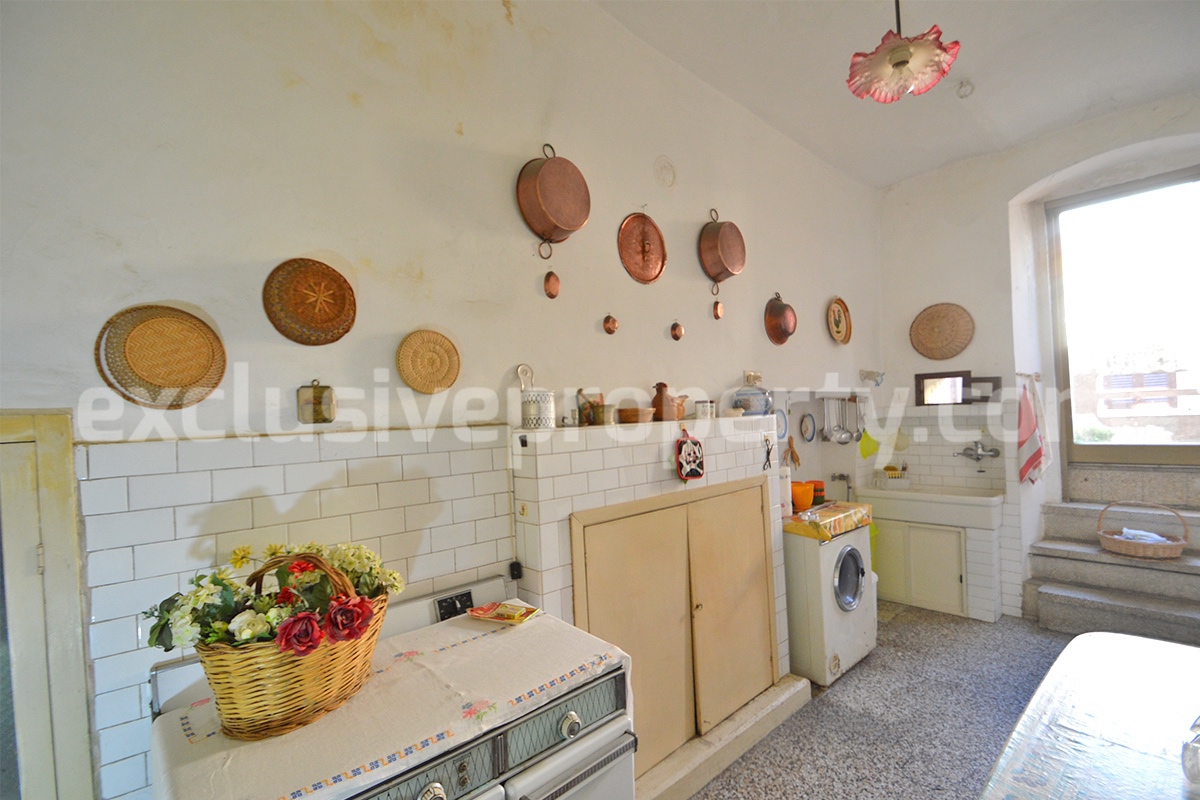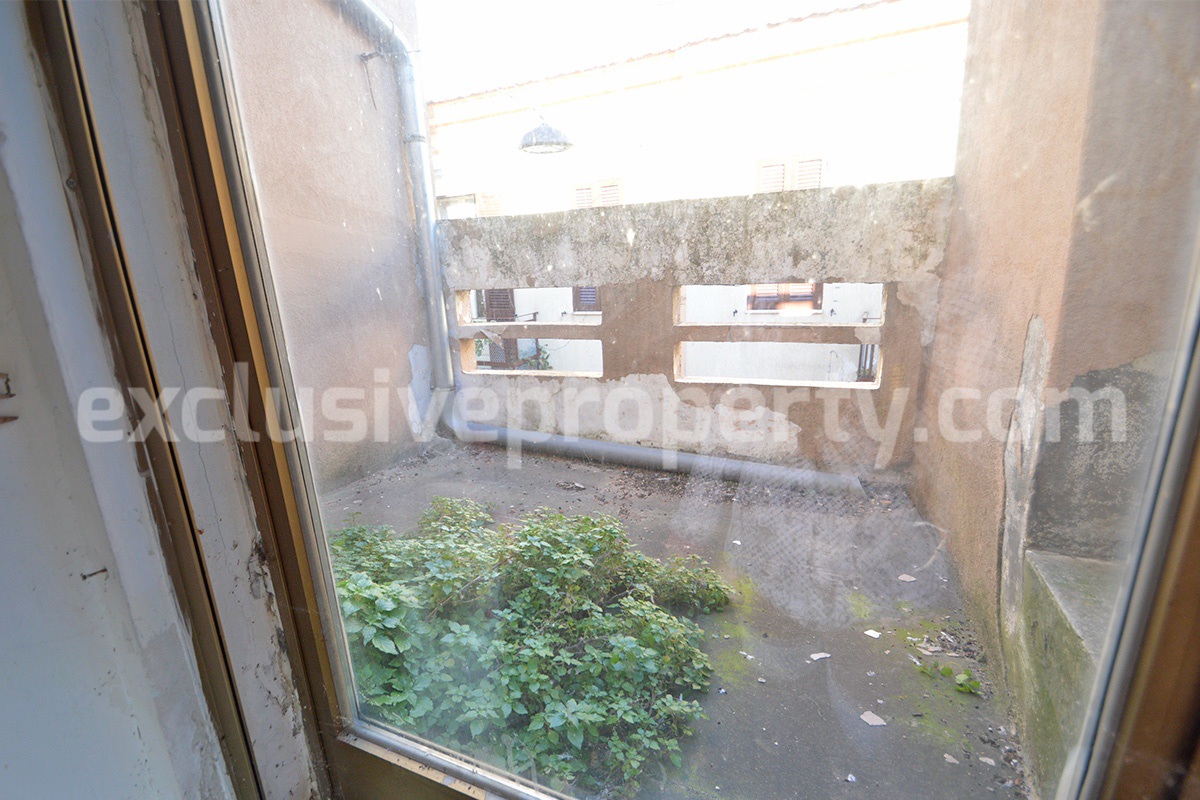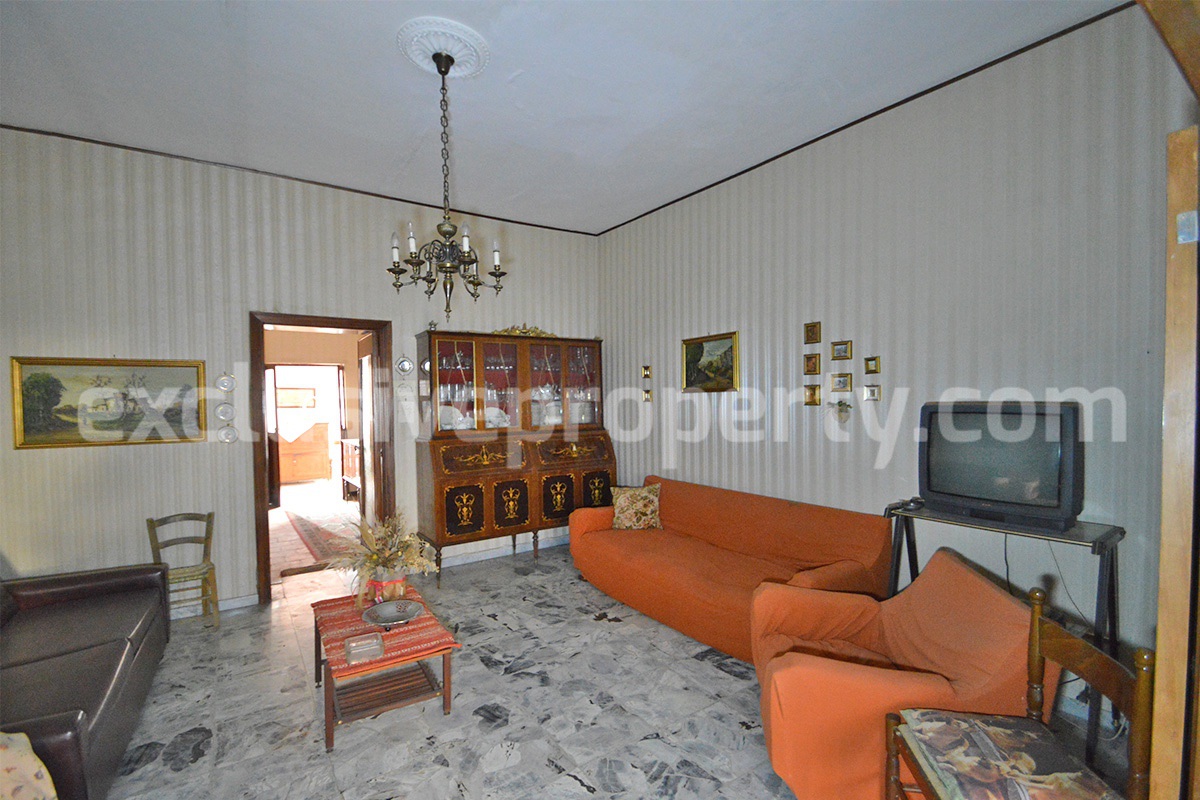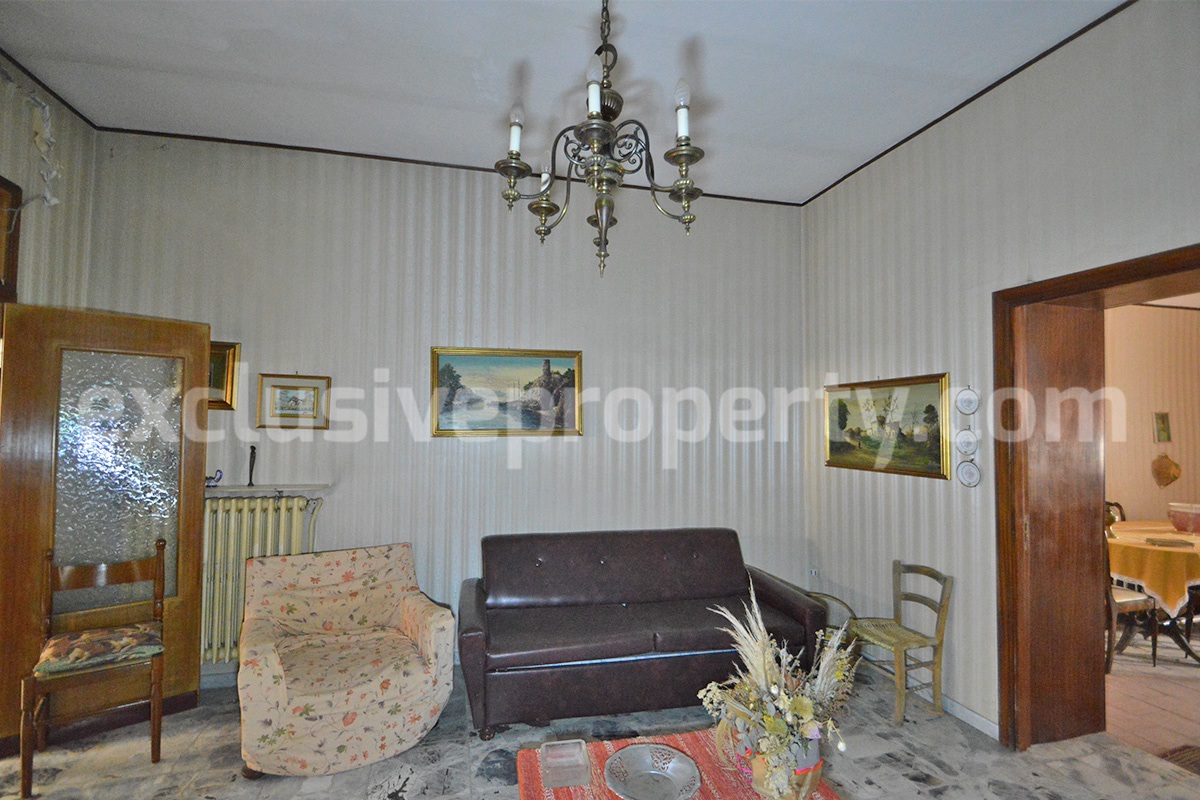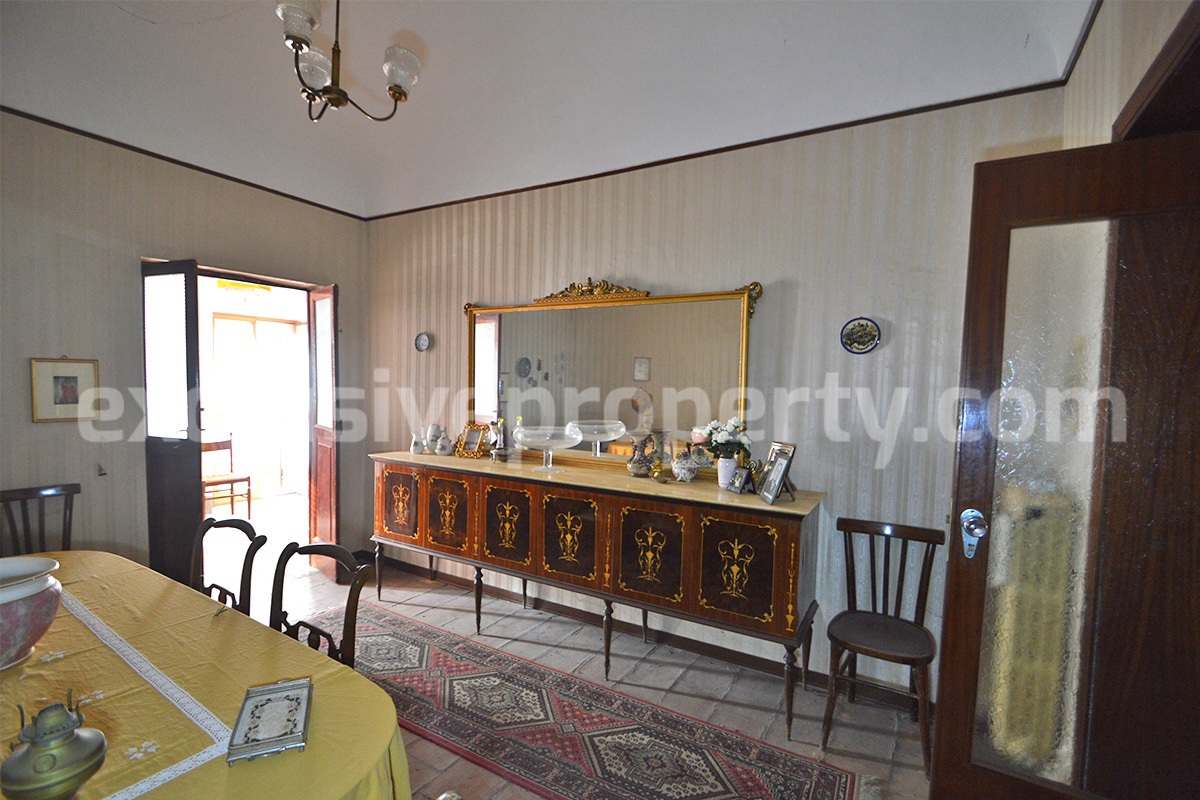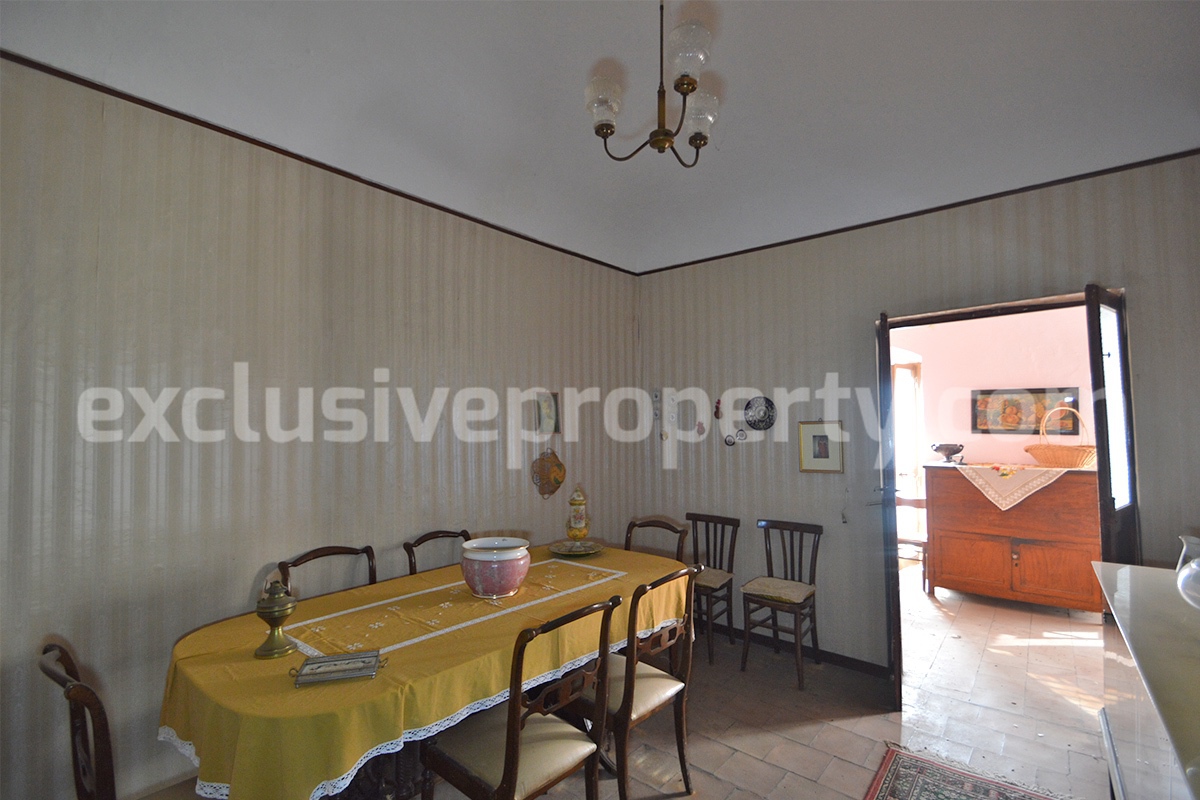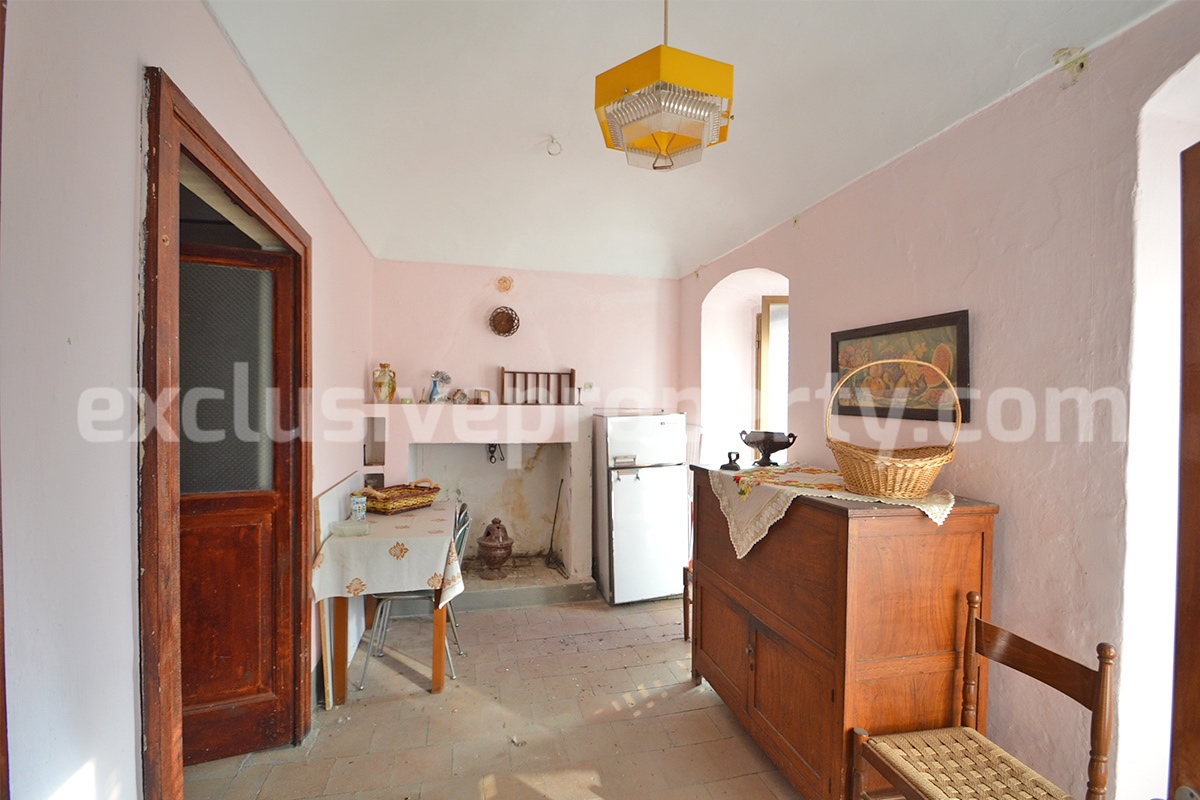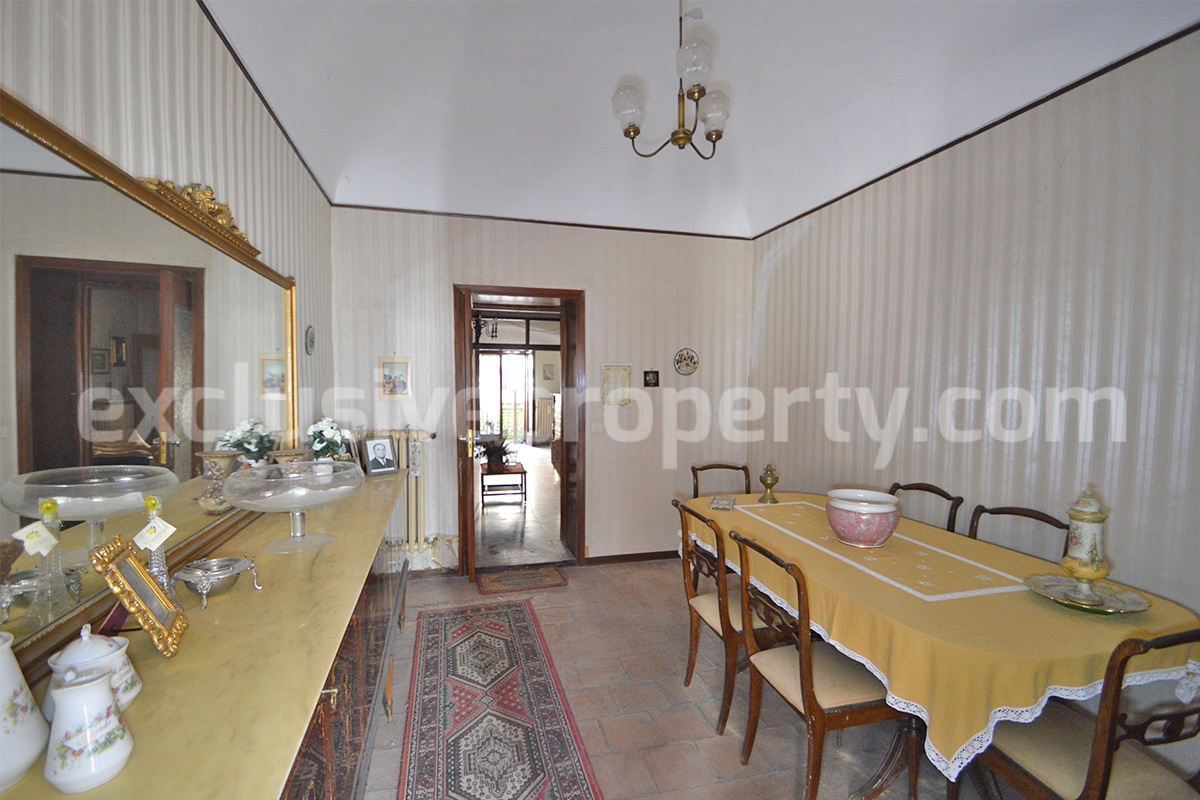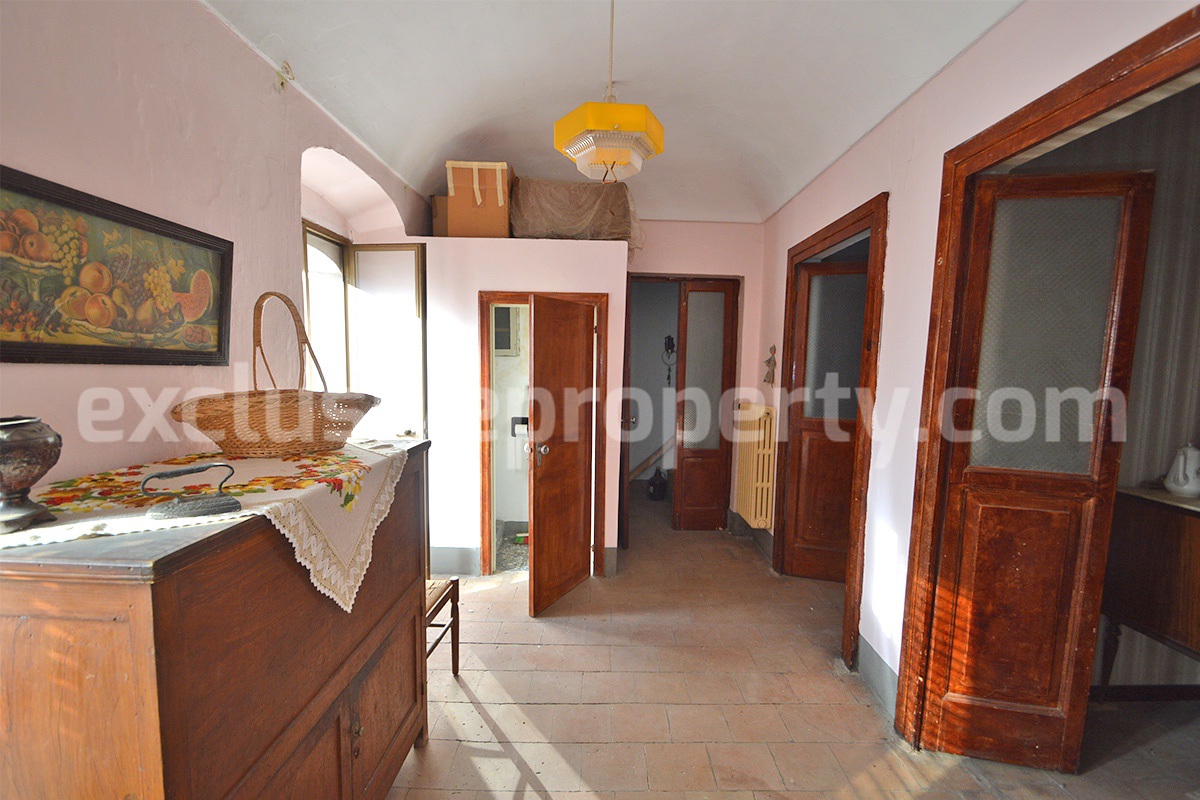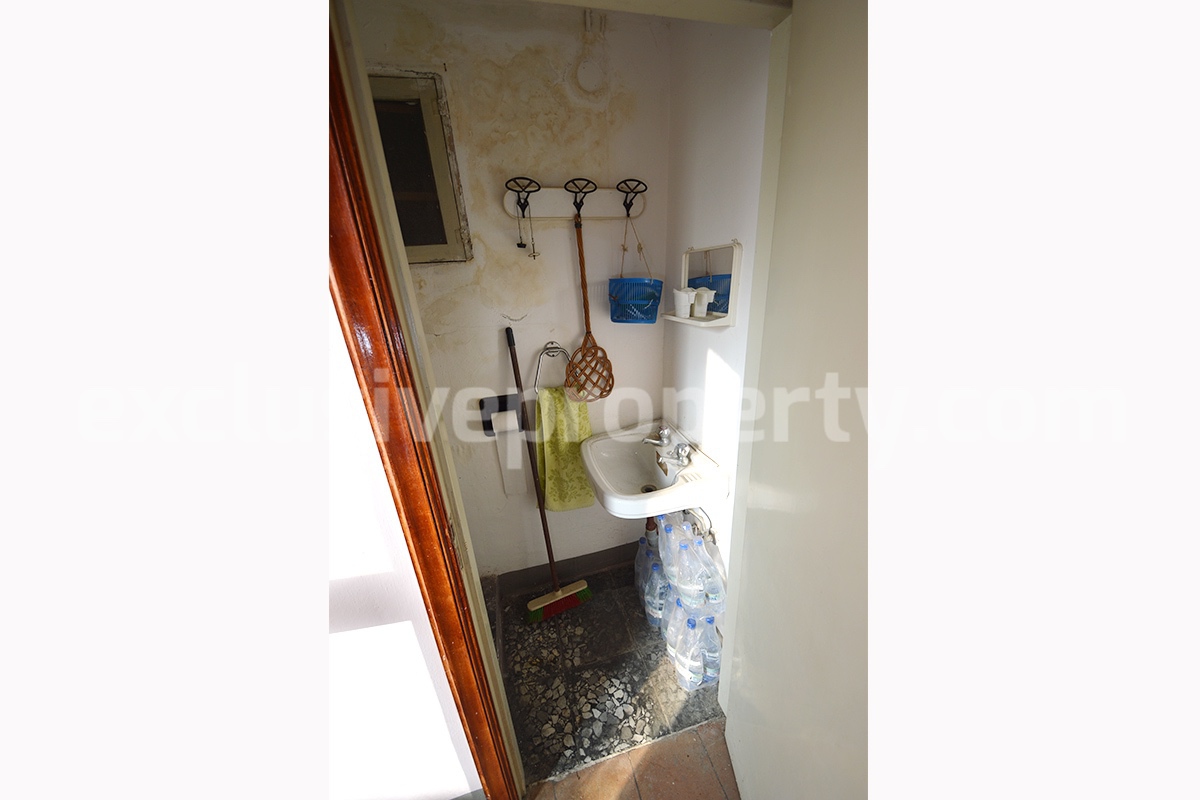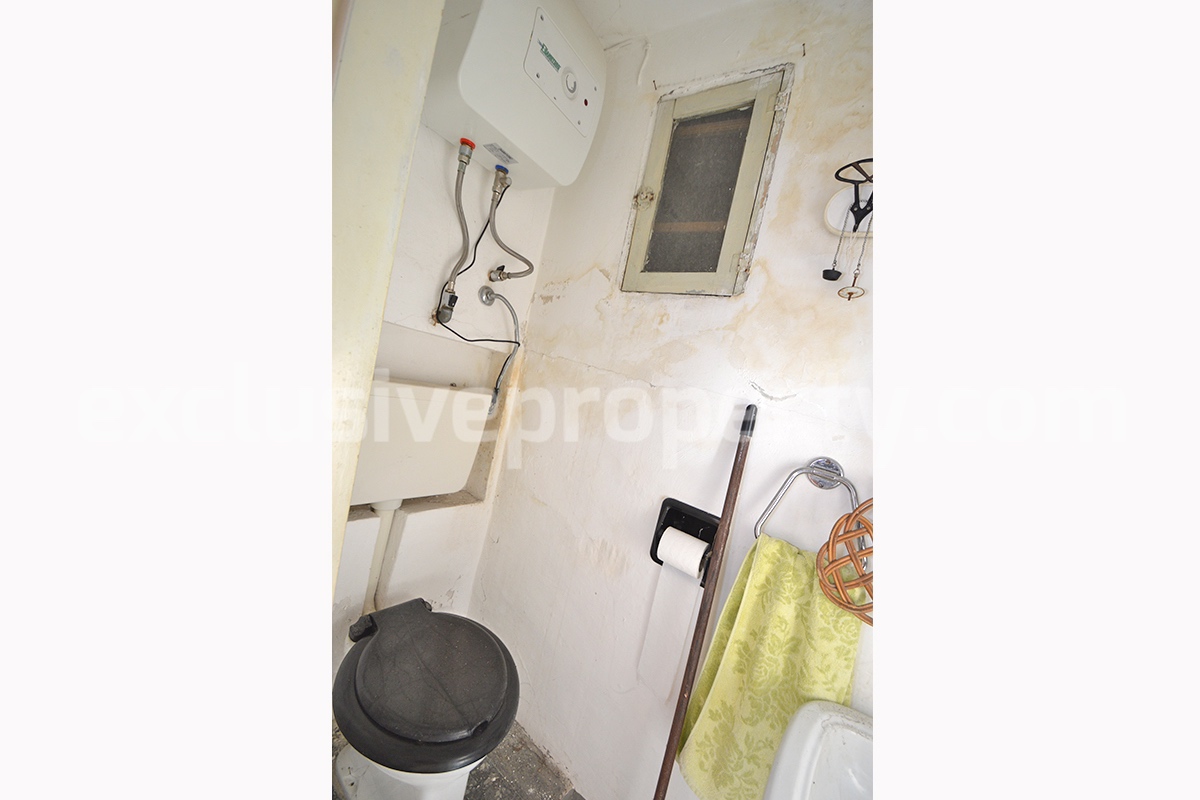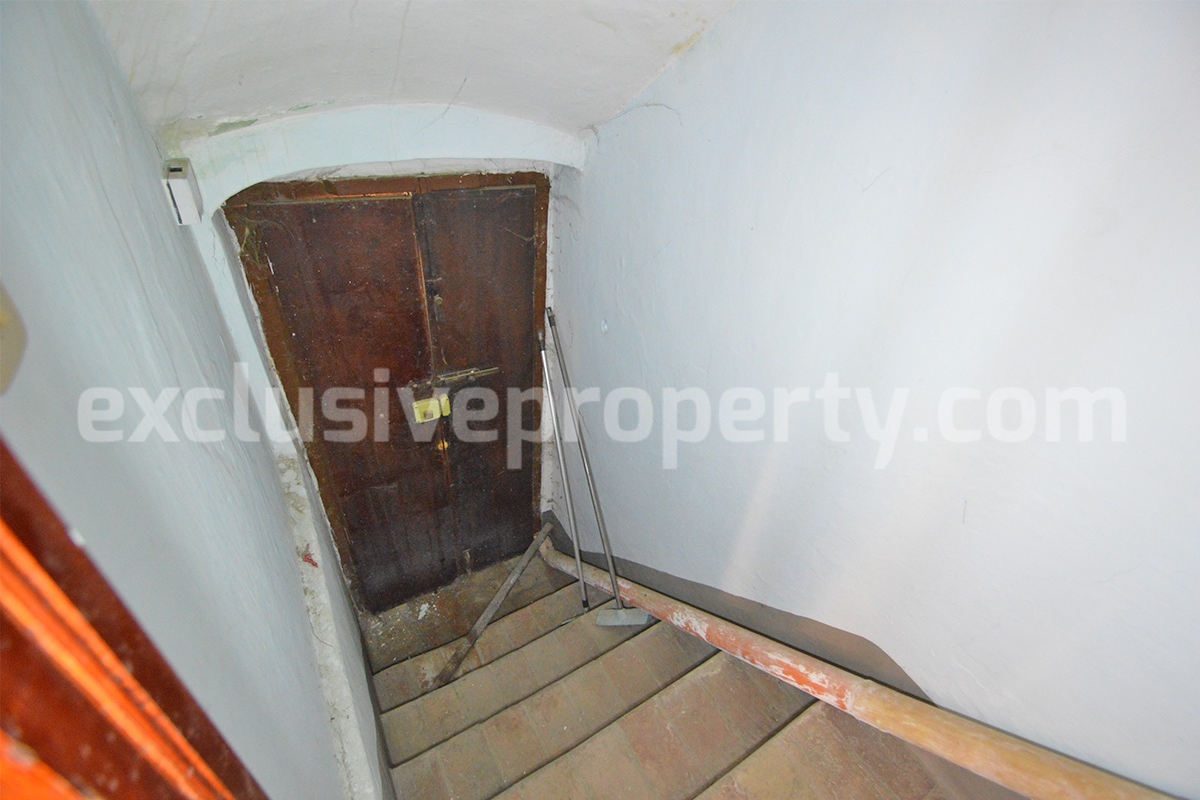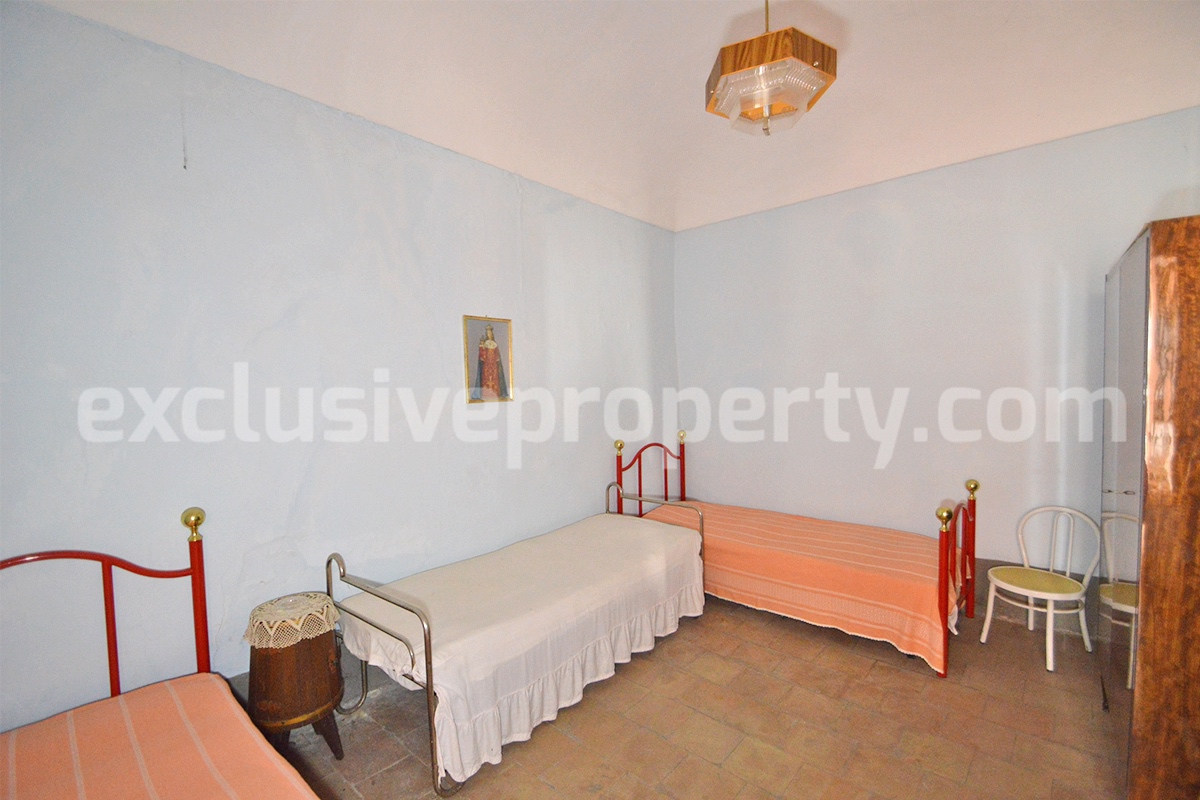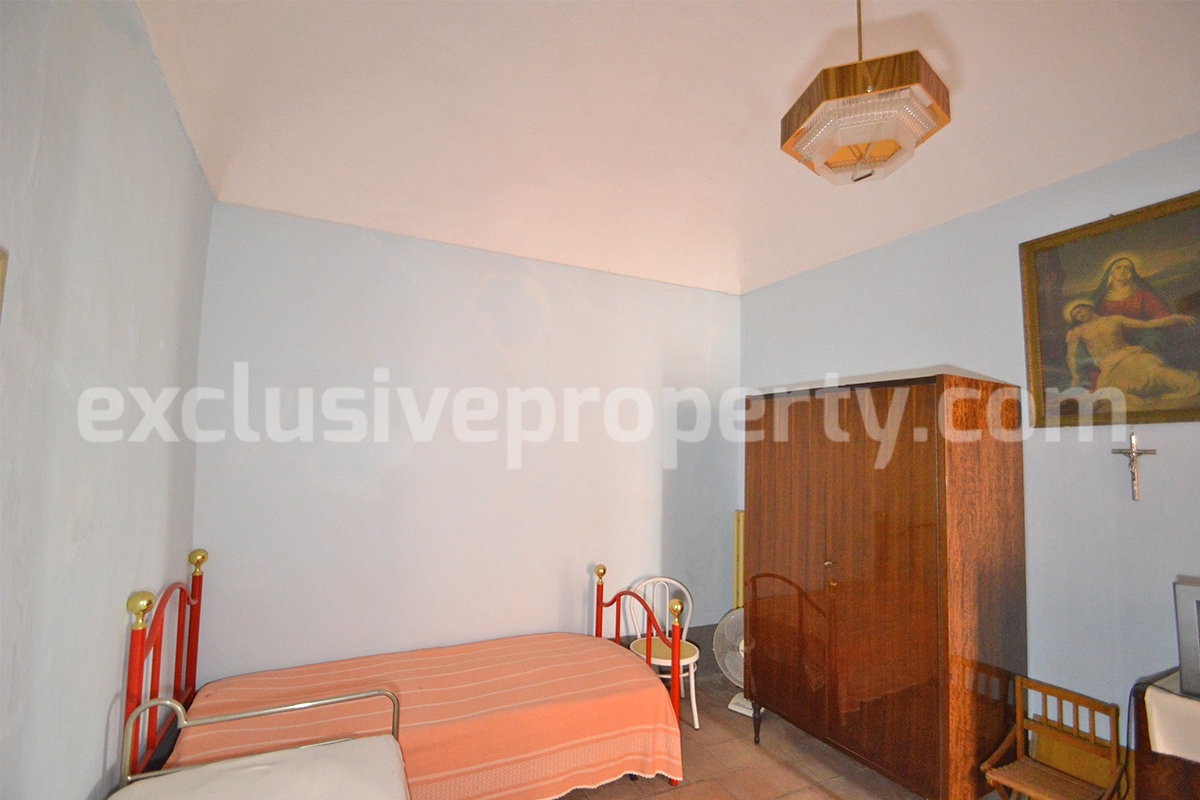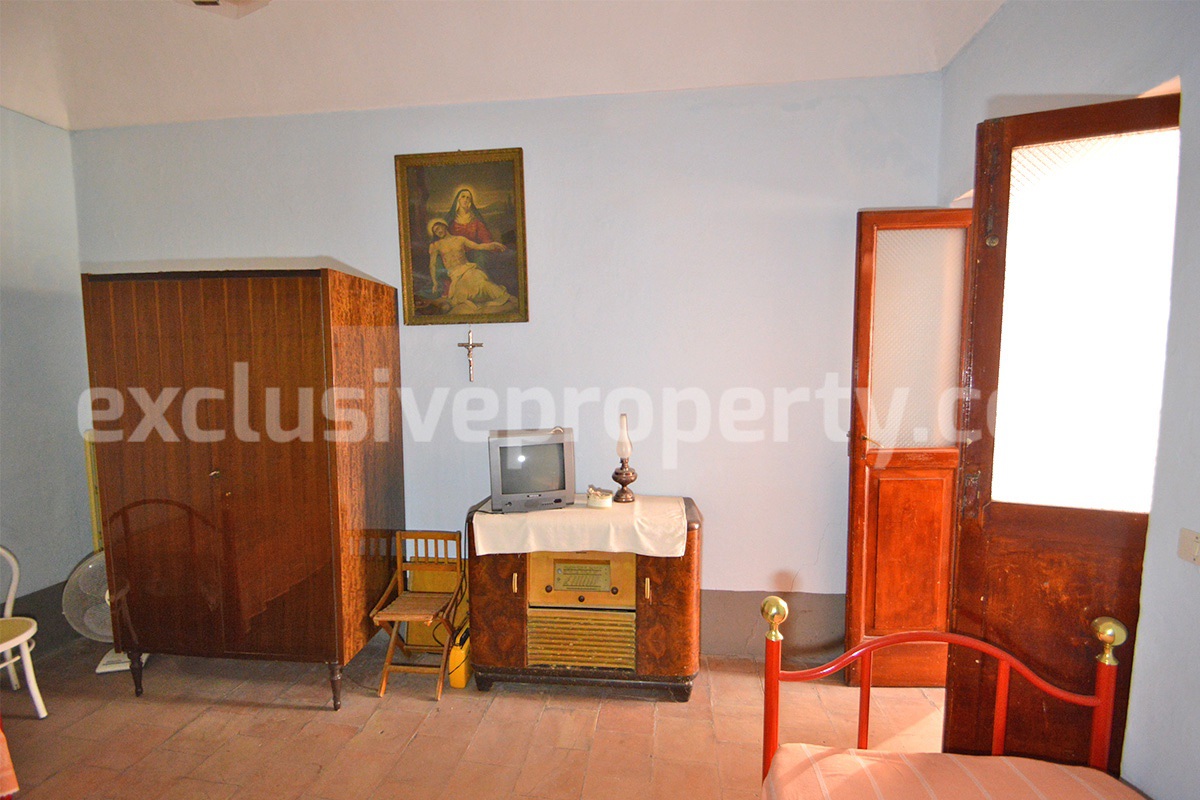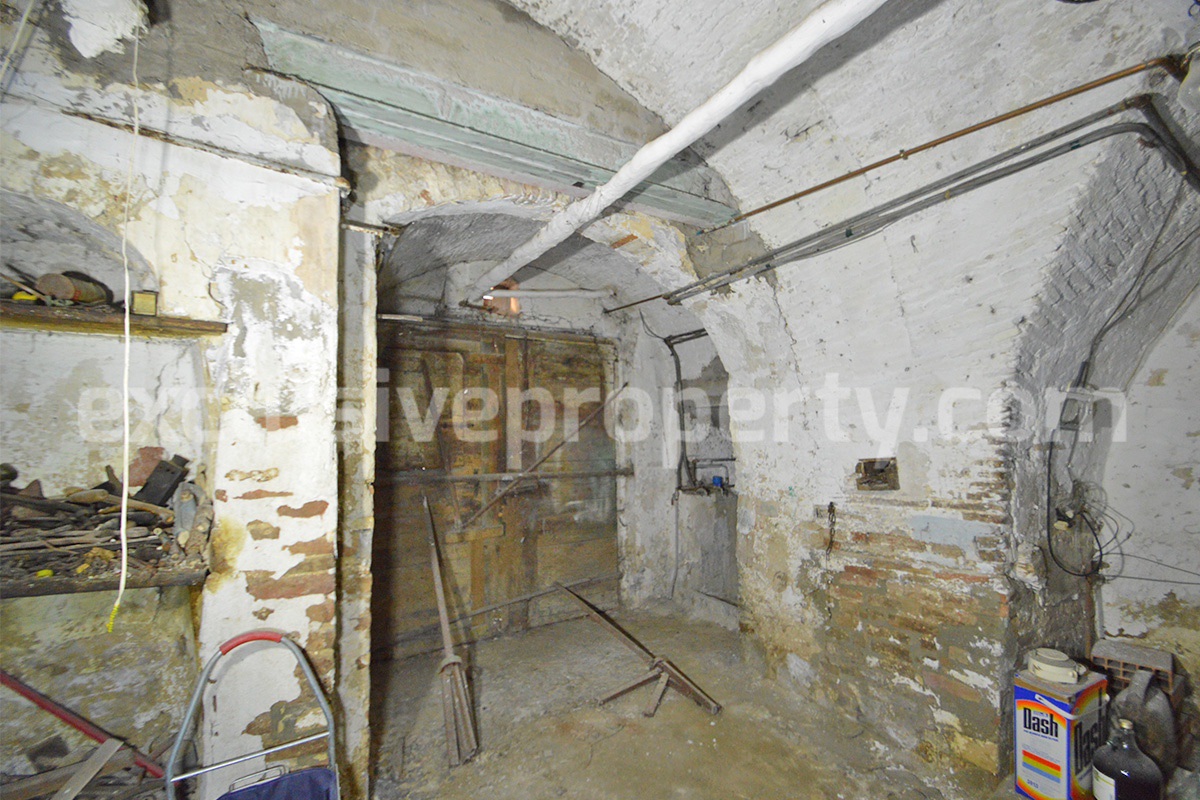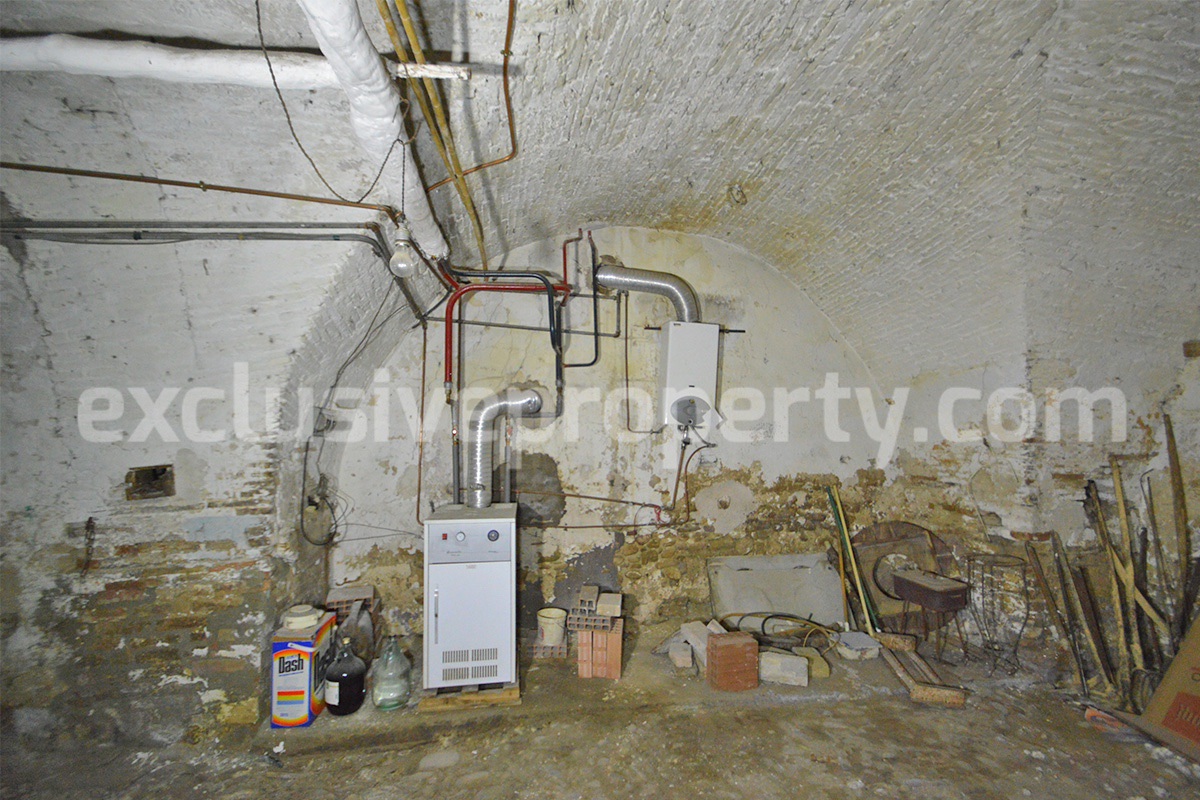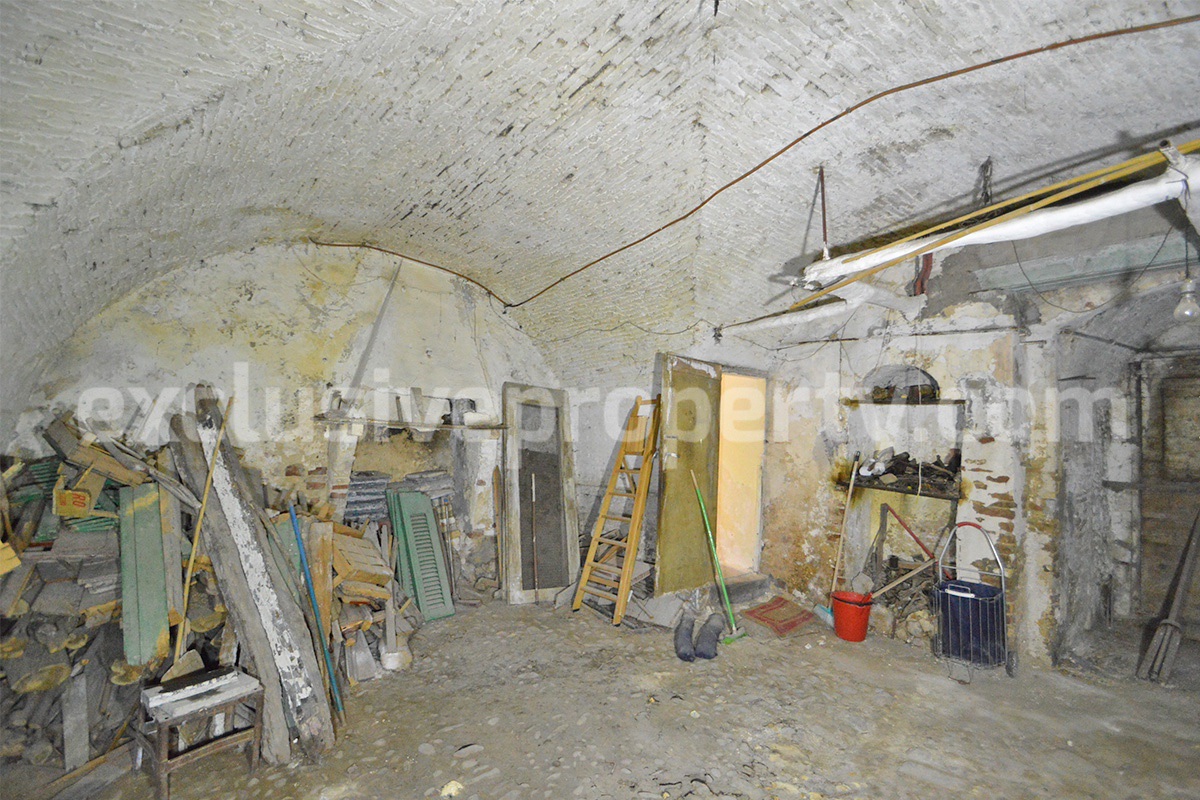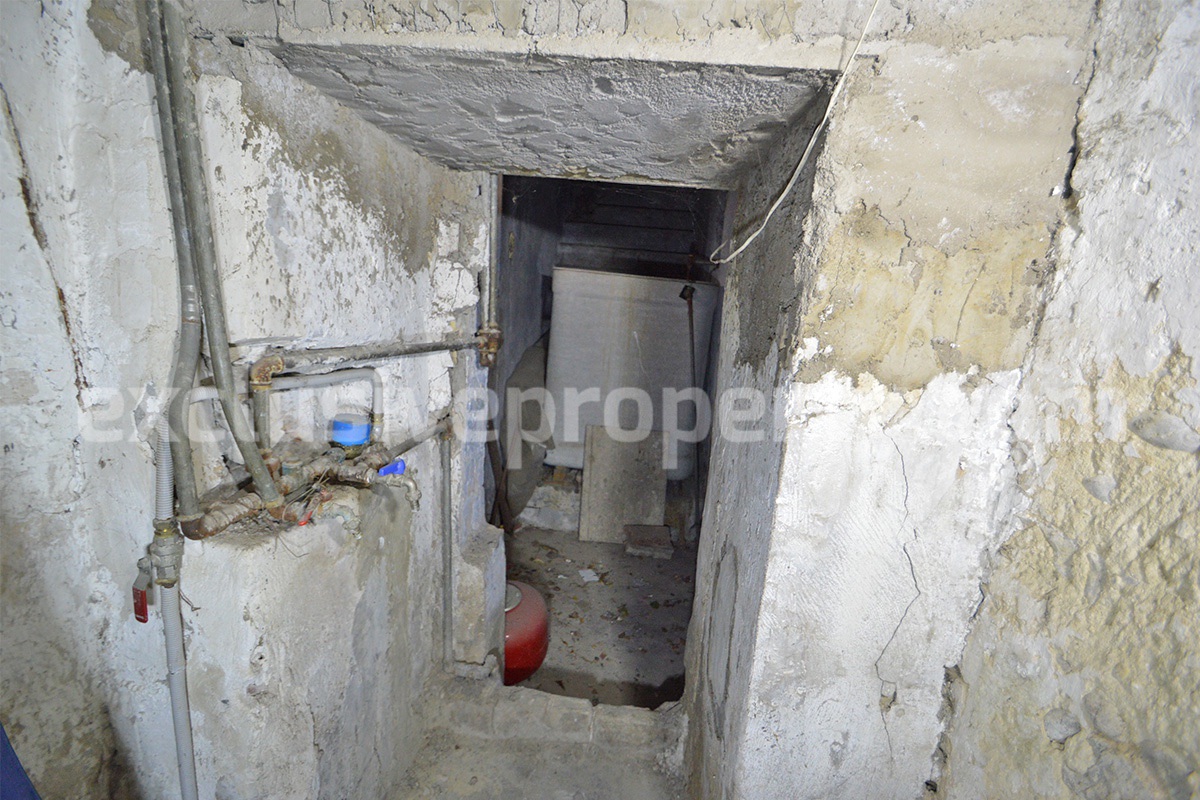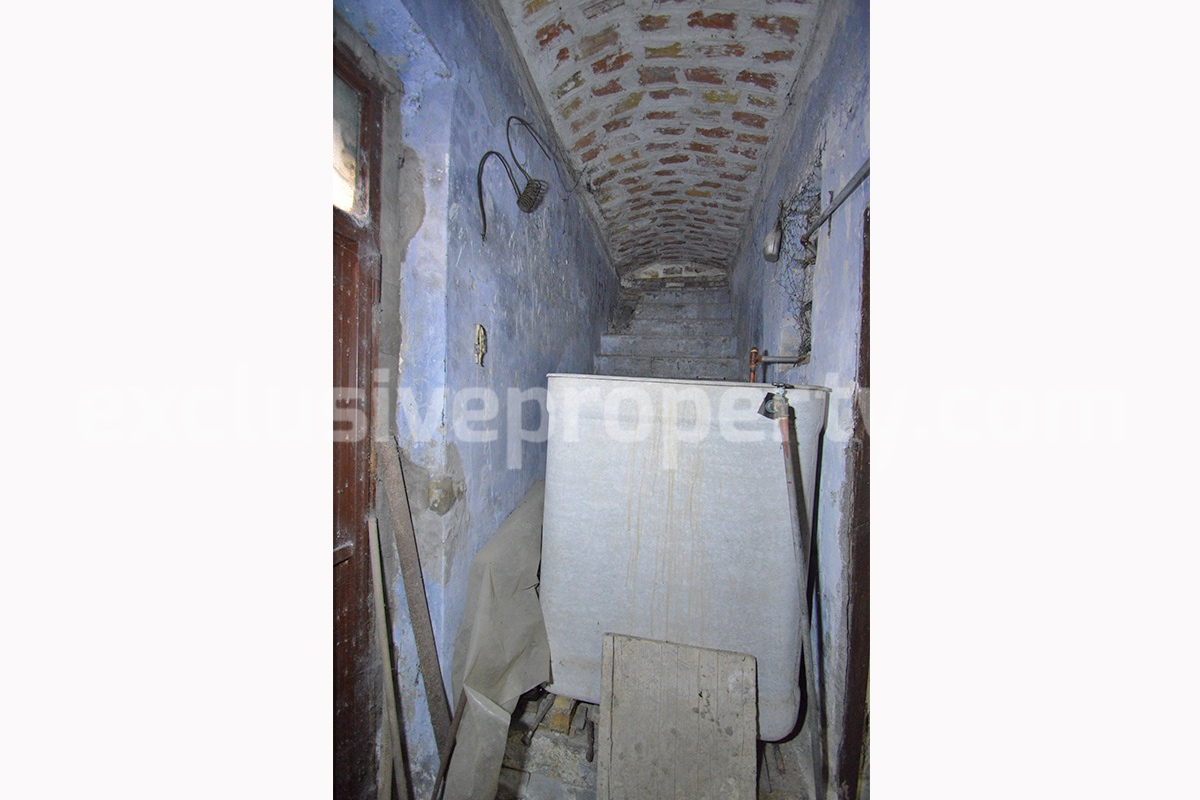At a glance
Like this property?
Call now +39 340 0624970 (english language), +39 333 2529230 (italian language) or REQUEST DETAILS for this property!
Description
In an ancient village of Albanian history and culture, Portocannone, in Molise, 11 km from Termoli and its beach, character town house of around 200 sq m, located in the historic center of the town.
The house retains intact some characteristics relating to the time of its construction (early nineteenth century): vaulted ceiling in the large area on the GROUND FLOOR currently used as storage rooms/cellars.
Access by ground floor.
On the FIRST FLOOR there is a spacious hallway/sitting area (3.11 m x 3.10 m = 9.64 sq m) a kitchen (5.61 m x 2.07 m = 11.61 sq m) with a large fireplace and a balcony, a living room (4.41 m x 4.43 m = 19.53 sq m), dining room (4.25 m x 3.23 m = 13.73 sq m), another kitchen (5.13 m x 2.5 m = 12.82 sq m), with fireplace and double French windows with balcony; from this room there is the second access, so the house could be used by two families or create two separated apartments; on the same floor we found then three master bedrooms (3.19 m x 4.25 m = 13.55 sq m) (3.69 m x 5.63 m = 20.77 sq m)(5.73 m x 3.13 m = 17.93 sq m), a toilette (1.36 m x 0.67 m = 0.91 sq m), a bathroom (1.88 m x 1.67 m = 3.14 sq m) with bathtub, a corridor (1.40 m x 5.24 m = 7.34 sq m).
On the GROUND FLOOR with separate access and access also from the main entrance, there are two cellars (5.67 m x 3.20 m = 18.14 sq m) (5.75 m x 5.59 m = 32.14 sq m) where in the big one there is the boiler and a fireplace.
The UTILITIES available but to be reconnected are: water, electricity, gas and heating system.
View on the village.
The current conditions of the house, in general, are good, but needs some update.
Another room on the GROUND FLOOR is also part of the property for sale, with an independent entrance, a few meters from the main house, of approximately 50 sq m.
PORTOCANNONE is a town in lower Molise with 2,335 inhabitants that enjoys proximity to the sea. It stands on a hill at 148 meters above sea level, near the right bank of the Biferno river, is located approximately 65 kilometers east of the regional capital. It is one of the four municipalities in the province of Campobasso belonging to the Albanian ethnic and linguistic minority, together with Campomarino, Montecilfone and Ururi, which has maintained the arbëreshë language and culture that distinguishes them for centuries. The municipality is also part of the national association of oil towns, which aims to promote extra virgin olive oil and the production territories.
It was founded in the locality called "Castelli", near the current municipal cemetery, by the Latin peoples in 1046. Initially it was called "Portocandesium", later changed to "Portocanduni". With the violent earthquake of 1456, the first Albanian migrations began and continued following the invasion of the Turks, in fact many Albanians sailed the Adriatic Sea in the hope of obtaining the protection of the kingdom of Naples. Portocannone was rebuilt and the new church was built in honor of the Madonna of Constantinople.
Among the main events it is worth mentioning the Carrese, an ox-drawn cart race in honor of the Madonna of Constantinople, a ritual (which takes place on the Monday following Pentecost) in which religion and folklore come together, a re-enactment of the past which is followed annually with intense participation from the entire community of Portocannone; consists of a competition between three "parties": the "Youth" distinguishable by the colors white and light blue, the "Giovanotti" with the colors yellow and red and, since 2008, the "Xhuvëntjelvet" in orange. Why is it an event that recalls the past? It is said that the colonists, once they arrived on the Adriatic coasts of Molise, due to the vastness of the territory, decided to follow the two yoked oxen dragging a cart on which the effigy of the Blessed Virgin of Constantinople was placed. These climbed the Ramitelli forest arriving right where the village was born together with the church dedicated to Maria SS di Costantinopoli, which immediately became an object of veneration by the inhabitants and a coveted trophy of the Carresi.
Among the other celebrations we have that of St. Anthony which takes place on the night of January 16th, the Carnival of Portocannone, characterized by the traditional transport of a papier-mâché puppet to the place where it will be burned, and finally the Living Nativity scene which involves a large part of the Portocannone people.
Among the most important monuments there is the Baronial Palace, built between 1735 and 1742 by Baron Carlo Diego Cinni; it presents itself as an imposing construction on the ancient city walls, it is also equipped with warehouses on the ground floor while on the first floor there are numerous rooms once inhabited with splendid frescoes and period furniture; on the top floor, however, there is a protruding portico from which you can glimpse the garden that flanks the building to the east.
The town gate of Borgo Costantinopoli; clear testimony of Albanian migrations, it stands as the main gate of the town on which the paintings representing the Arbëreschë customs can still be admired today. You can also visit the Mother Church of Saints Peter and Paul in the Borgo Constantinopoli where the painting of the Blessed Virgin Mary is placed dating back to the 16th century, and the church of the Madonna del Carmelo from the 17th century, present in the innermost part of the town and has a single nave.
The economy is essentially based on agriculture with mainly wheat production. The town is equipped with facilities for leisure and cultural activities, including the municipal theater and the amphitheater which, in the summer period, allows the outdoor performance of theatrical and musical shows.
Weekly market every Thursday (excluding holidays). Restaurant, pizzeria, pharmacy, bar, hotel and B&B and some basic necessities shops.
Show MoreAmenities
- Balcony
- Cellar
- Fireplace
- Garage
- Terrace
Distances
- Airport: 112 km/1 hr 14 min from Pescara international airport, 207 km/2 hr 46 min from Napoli airport, 338 km/3 hr 25 min from Roma airport and 207 km/1 hr 58 min from Bari airport.
- Coast: 12 km/16 min from the beach of Termoli, 9 km/12 min from the beach of Lido di Campomarino, 17 km/19 min from the beach of Marina di Chieuti, 70 km/46 min from Fossacesia Marina, Costa dei Trabocchi, where you can taste typical cuisine.
- Skiing resort: 147 km/1 hr 44 min km from the ski lifts of Passo Lanciano, 140 km/2 hr from the Roccaraso/Rivisondoli ski lifts (with 24 ski lifts it has the largest number of lifts in Abruzzo) and 99 km/1 hr 24 min from the Campitello Matese.
- Train station: 11 km/16 min from the train station of Termoli.

